#bruce lee tribute
Explore tagged Tumblr posts
Text

It’s Bruce Lee Day/Bruce Lee’s 84th birthday! The birthday of one of the greatest martial artists and actors of all time known for his amazing work in his legendary martial arts films, his own made martial arts, and his philosophy. His work was nothing short of influential, incredible and just inspiring for many people. Not only did it bridged the gap between the west and the east in terms of culture and content but also in pop culture as well! With many people influenced by him (Chuck Norris, Jackie Chan, Arnold Schwarzenegger, Eddie Murphy, Olivia Munn, Stan Lee, Akira Toriyama, Masashi Kishimoto, Sharon Tate, Kareem Abdul Jabbar and etc!) as well as anime and manga (Cowboy Bebop, Dragon Ball, Fist of the North Star etc) and video games (Street Fighter, Kung Fu Master, Beat em Ups and Fighting games in general etc)!
Bruce Lee, Happy 84th Heavenly Birthday you legendary man, and while you unfortunately passed away so young and unexpectedly at the age of 32 on July 20th 1973, your impact, legacy and beautiful work will live on forever my friend…
#bruce lee#bruce Lee fanart#bruce Lee art#bruce lee 84#bruce lee 84th birthday#bruce lee tribute#thank you bruce lee#bruce lee day#bruce lee day 2024
1 note
·
View note
Text

Tribute to dragon Bruce Lee
2 notes
·
View notes
Text

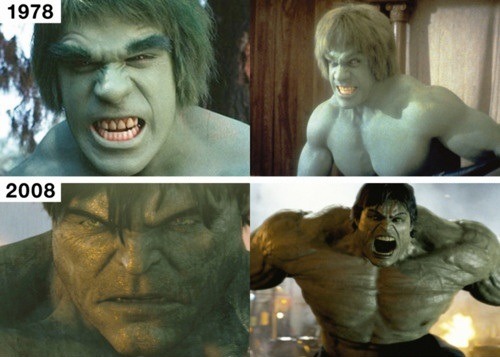
youtube
youtube
youtube
The Incredible Hulk pays HOMAGE to the 1978 TV series! 🎥📺
#fun fact#fun facts#trivia#comics#comic books#marvel#marvel comics#marvel comic books#marvel characters#marvel superheroes#hulk#the hulk#the incredible hulk#bruce banner#lou ferrigno#stan lee#paul soles#bill bixby#homage#tribute#hulk 2008#marvel movies#mcu#marvel cinematic universe#Youtube
5 notes
·
View notes
Text
Throwback to some 2009 art



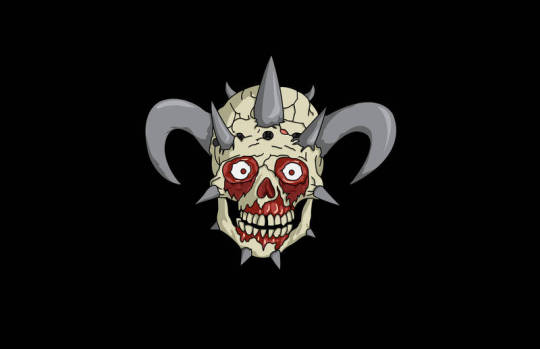
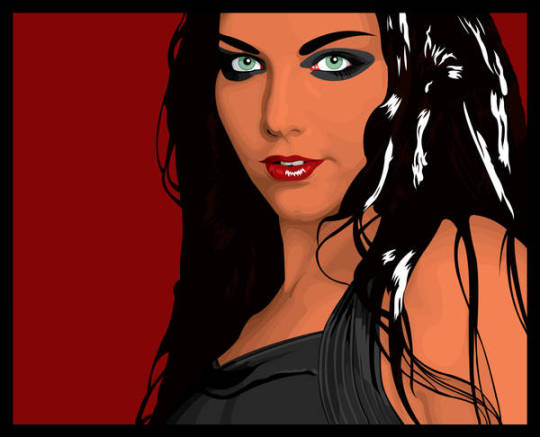

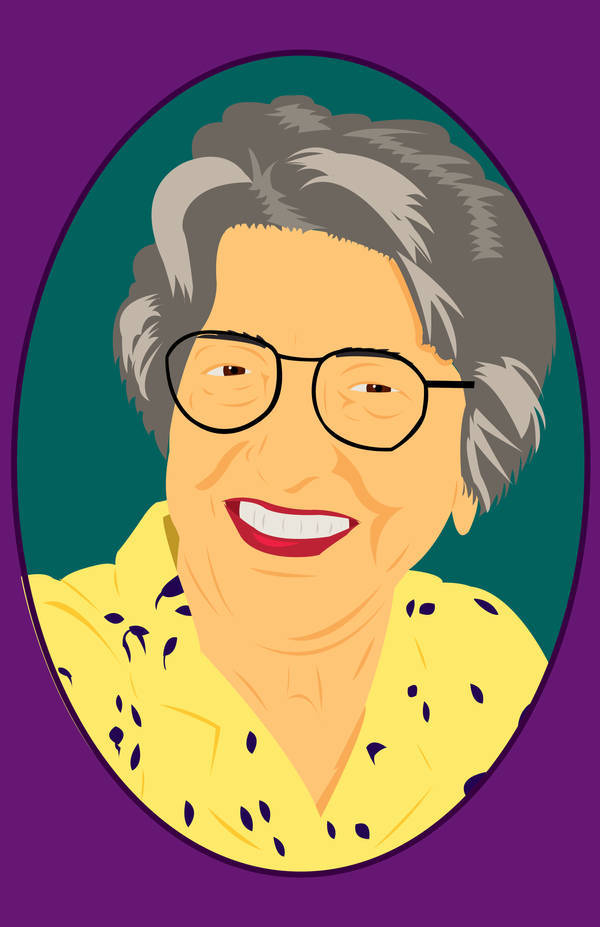
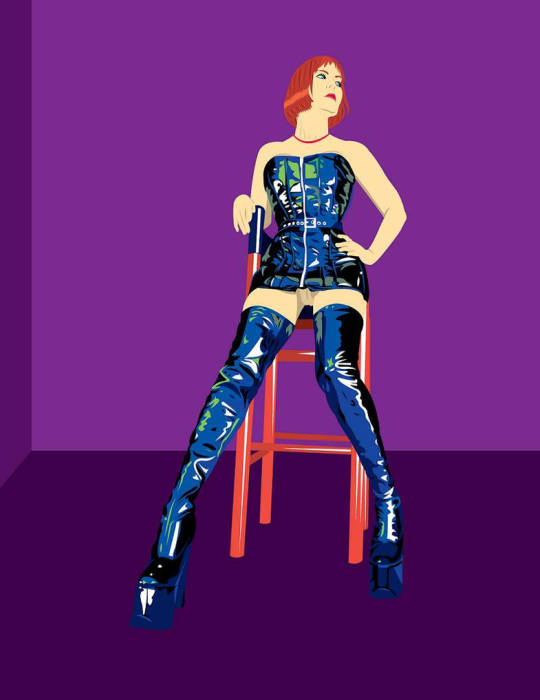

Well, it has been some time, but I have returned. I'm getting back into the art scene, so I'm starting with some older stuff for inspiration
#art#artwork#pixel art#vector#vector art#clone high#Reboot#hexadecimal#meerkat#fanart#facebones#metalocalypse#Bruce Campbell#Tribute#digital art#amy lee#evanescence#ren and stimpy
5 notes
·
View notes
Text
youtube
#30 facts about bruce lee#facts on bruce lee#bruce lee#dragon: the bruce lee story#bruce lee facts#brucelee#bruce lee nicknames#fists of fury#30 facts#about#bruce#scientists discovery#jeet kune do#fist of fury#punching bags#top discovery#facts#future#tribute#kung fu#enter the dragon#way of the dragon#elon musk#james webb#lee jun fan#punching bag#martial arts#entertainment#game of death#lee
0 notes
Photo

My 'Obligatory' Duplighost Sona
After over a month of design ideas, her design is finally done! It took some work to balance out the colors, and add some hints about myself to her (e.g. She has fangs because I liked vampires as a young kid.). Ekyta, Ekati, and Ekaty are some examples of names I have in mind for her (no, you do not get to pick), since I planned for her to have a name linked with the Greek Goddess of Magic and Witchcraft, Hecate; like how Doopliss's name in all of the other languages, Rumpel/Rampel, reference Rumpelstiltskin, and Lee's name is a tribute to Bruce Lee. Her story isn't exactly finished yet, but what I have in mind is that she's [possibly close] friends with Doopliss. We're just gonna see how it turns out together! I can guarantee you, unlike my "Me as _____" arts I made at 14, this true Sona is going to have more appearances in future arts. I hope you look forward to what she has to offer! Thank you and goodnight!
#paper mario#duplighost#sona#paper mario ttyd#duplighost sona#galaxy colors#paper mario the thousand year door
12 notes
·
View notes
Text

MY 200 FAVORITE ALBUMS OF ALL-TIME
(Revised 2024 Edition)
To my way of thinking, a list of favorite albums changes over time. At any moment, there might be as many as 300 or 400 albums that are good enough to make a favorites list of 200. Where and how to cut is the question. I do a new list whenever the old one feels outdated to me. The criteria I use is pretty basic. I choose my favorite records to listen to, and those that get played more often are ranked higher. But my listening habits change from time to time, so when an album I love doesn't get played as often because I'm getting tired of it, it falls to a lower spot on the list, or disappears altogether. If I haven't played it in awhile, and it sound fresh to me, it goes back into regular rotation, and subsequently climbs higher on the list. I go through periods when I listen to one genre more than another, and that can also affect where the album lands on the list. Playability is the most important factor. That's why an album that has one great side that gets played all the time while the other side is ignored, won't rank as high as one that I enjoy playing from start to finish. And critics lists are things I often read, but completely ignore when it comes to doing my own. My list reflects my tastes, and my biases only.
This is my first revision since March of 2023. There are 28 new additions to the list this time marked with an asterisk. And, in case you're wondering, there were five artists that placed at least five albums on the list. They were The Rolling Stones (13), The Beatles (8), and The Beach Boys, Steely Dan, and Tom Petty each had five (though four of Petty's were with The Heartbreakers, and the fifth was a solo album). Here's my list, and I hope it encourages you to explore something you might not have heard, or to pull something out you may not have played in awhile.
1. All Things Must Pass – George Harrison (1970)
2. Revolver (UK) – The Beatles (1966)
3. The Wild, The Innocent & The E Street Shuffle – Bruce Springsteen (1973)
4. Blood on the Tracks – Bob Dylan (1975)
5. Sticky Fingers – The Rolling Stones (1971)
6. Close to the Edge – Yes (1972)
7. The Dark Side of the Moon – Pink Floyd (1973)
8. L.A. Woman – The Doors (1971)
9. Surrealistic Pillow – Jefferson Airplane (1967)
10. The Who by Numbers – The Who (1975)
11. Help (UK) – The Beatles (1965)
12. A1A – Jimmy Buffet (1974)
13. Bitches Brew – Miles Davis (1970)
14. Kind of Blue – Miles Davis (1959)
15. Pet Sounds – The Beach Boys (1966)
16. A Tribute to Jack Johnson – Miles Davis (1971)
17. Pat Metheny Group (1978)
18. A Hard Day’s Night (UK) – The Beatles (1964)
19. Aftermath (US) – The Rolling Stones (1966)
20. The Division Bell – Pink Floyd (1994)
21. Heavy Weather – Weather Report (1977)
22. Bridge Over Troubled Water – Simon & Garfunkel (1970)
23. Sweet Baby James – James Taylor (1970)
24. Surf’s Up – The Beach Boys (1971)
25. Exile on Main St. – The Rolling Stones (1972)
26. At Fillmore East – The Allman Brothers Band (1971)
27. Born to Run – Bruce Springsteen (1975)
28. The Hissing of Summer Lawns – Joni Mitchell (1975)
29. The Doors (1967)
30. Highway 61 Revisited – Bob Dylan (1965)
31. Rust Never Sleeps – Neil Young & Crazy Horse (1979)
32. Let It Bleed – The Rolling Stones (1969)
33. Astral Weeks – Van Morrison (1969)
34. (Untitled) (4th) – Led Zeppelin (1971)
35. Teaser & the Firecat – Cat Stevens (1971)
36. The Velvet Underground & Nico (1967)
37. On the Road to Freedom – Alvin Lee & Mylon LeFevre (1973)
38. Tea for the Tillerman – Cat Stevens (1970)
39. The Complete Africa Brass Sessions – John Coltrane (1961)
40. Holland – The Beach Boys (1973)
41. Layla and Other Assorted Love Songs – Derek & the Dominos (1970)
42. Heartbreaker – Free (1972)
43. Pisces, Aquarius, Capricorn, Jones, Ltd. – The Monkees (1967)
44. Beggar’s Banquet – The Rolling Stones (1968)
45. III – Led Zeppelin (1970)
46. Seventh Sojourn – Moody Blues (1972)
47. Forever Changes – Love (1967)
48. My Favorite Things – John Coltrane (1961)
49. Meet The Beatles – The Beatles (1964)
50. Can’t Buy a Thrill – Steely Dan (1972)
51. Beautiful Vision – Van Morrison (1982)
52. Days of Future Passed – Moody Blues (1967)
53. Setting Sons (US) – The Jam (1979)
54. The Captain & Me – Doobie Brothers (1973)
55. The Dream of the Blue Turtles – Sting (1985)
56. Willy & the Poor Boys – Creedence Clearwater Revival (1969)
57. The Way It Is – Bruce Hornsby & The Range (1986)
58. One Fair Summer Evening – Nanci Griffith (1988)
59. The Beatles Second Album -The Beatles (1964)
60. Who’s Next – The Who (1971)
61. Idlewild South – The Allman Brothers Band (1970)
62. Beatles ’65 – The Beatles (1964)
63. Presenting the Fabulous Ronettes featuring Veronica - The Ronettes (1964)
64. Chuck Berry is On Top – Chuck Berry (1959)
65. First Circle – Pat Metheny Group (1984)
66. The Allman Brothers Band (1969)
67. Young Americans – David Bowie (1975)
68. The End of the Day – The Reivers (1989)*
69. Visions of the Emerald Beyond – Mahavishnu Orchestra (1975)
70. Will O’ The Wisp – Leon Russell (1975)
71. 461 Ocean Boulevard – Eric Clapton (1974)
72. Band on the Run – Paul McCartney & Wings (1973)
73. It’s Only Rock ‘N’ Roll – The Rolling Stones (1974)
74. Manassas – Stephen Stills & Manassas (1972)
75. Pretzel Logic – Steely Dan (1974)
76. Peter Gabriel (3rd/Melt) (1980)
77. Made in Japan – Deep Purple (1973)
78. Where Have I Known You Before – Return to Forever (1974)
79. Green River – Creedence Clearwater Revival (1969)
80. Making Movies – Dire Straits (1980)
81. Rock ‘N’ Roll Animal – Lou Reed (1974)
82. Selling England by the Pound – Genesis (1973)
83. Heroes – David Bowie (1977)
84. Afro Blue Impressions – John Coltrane (1963)
85. Some Girls – The Rolling Stones (1978)
86. Diesel & Dust – Midnight Oil (1987)
87. Mysterious Traveler – Weather Report (1974)
88. Blues from Big Bill’s Copacabana – Various Artists (1968)
89. Modern Times – Jefferson Starship (1981)
90. Blow Your Cool – Hoodoo Gurus (1987)
91. Ram – Paul & Linda McCartney (1971)
92. Caravanserai – Santana (1972)
93. Odessey & Oracle – The Zombies (1968)
94. Black Market – Weather Report (1976)
95. Heart Like a Wheel – Linda Ronstadt (1974)
96. 12X5 – The Rolling Stones (1964)
97. Santana (1969)
98. In Concert: Live at Philharmonic Hall – Miles Davis (1973)
99. Bridge of Sighs – Robin Trower (1974)
100. Pirates – Rickie Lee Jones (1981)
101. Benefit – Jethro Tull (1970)
102. Madman Across the Water – Elton John (1971)
103. Countdown to Ecstasy – Steely Dan (1973)
104. McCartney – Paul McCartney (1970)
105. Yesterday’s Wine – Willie Nelson (1971)
106. Howlin’ Wind – Graham Parker & The Rumour (1976)
107. Voice of America – Little Steven (1984)
108. Out of Our Heads (US) – The Rolling Stones (1965)
109. Blow by Blow – Jeff Beck (1975)
110. Robbie Robertson (1987)
111. Gaucho – Steely Dan (1980)
112. Desire – Bob Dylan (1976)
113. Vol. 4 – Black Sabbath (1972)
114. Abbey Road – The Beatles (1969)
115. Aja – Steely Dan (1977)
116. Yessongs – Yes (1973)
117. Rickie Lee Jones (1979)
118. Bare Trees – Fleetwood Mac (1972)
119. Something/ Anything? – Todd Rundgren (1972)
120. After the Gold Rush – Neil Young (1970)
121. Physical Graffiti – Led Zeppelin (1975)
122. Rock ‘N’ Roll – John Lennon (1975)
123. Abraxas – Santana (1970)
124. Hard Promises – Tom Petty & The Heartbreakers (1981)
125. A New World Record – Electric Light Orchestra (1976)
126. Ghost in the Machine – The Police (1981)
127. The Low Spark of High-Heeled Boys – Traffic (1971)
128. Dreaming My Dreams – Waylon Jennings (1975)
129. We’re an American Band – Grand Funk Railroad (1973)
130. Chicago Transit Authority – Chicago (1969)
131. What’s Goin’ On – Marvin Gaye (1971)
132. Don’t Cry Now – Linda Ronstadt (1973)
133. Goodbye Yellow Brick Road – Elton John (1973)
134. Jaco – Jaco Pastorius (1976)
135. Peter Frampton (1975)
136. Prisoner in Disguise – Linda Ronstadt (1975)
137. El Mocambo 1977 – The Rolling Stones (2022)
138. Document – R.E.M. (1987)
139. Harbor – America (1977)*
140. Love’s Melodies – The Searchers (1981)*
141. Doll Revolution – Bangles (2003)*
142. Learning to Crawl – Pretenders (1984)
143. Black & Blue – The Rolling Stones (1976)
144. The Yardbirds (Roger the Engineer) (1966)*
145. Lifes Rich Pageant – R.E.M. (1986)*
146. America (1971)*
147. Wildflowers – Tom Petty (1994)*
148. Aladdin Sane – David Bowie (1973)
149. Dusty in Memphis – Dusty Springfield (1969)
150. Everything – Bangles (1988)*
151. That’s Why God Made the Radio – The Beach Boys (2012)
152. Stephen Stills (1970)*
153. On the Border – Eagles (1974)
154. Baron Von Tollbooth & The Chrome Nun – Kantner, Slick & Freiberg (1973)
155. The Pretender – Jackson Browne (1976)
156. Under the Big Black Sun – X (1982)*
157. Stand Up – Jethro Tull (1969)
158. Let Me Up (I’ve Had Enough) – Tom Petty & The Heartbreakers (1987)*
159. London Calling – The Clash (1979)*
160. Live at The Star Club – The Beatles (1977)
161. The Joshua Tree – U2 (1987)
162. Eat to The Beat – Blondie (1979)*
163. One of These Nights – Eagles (1975)*
164. Scarecrow – John Mellencamp (1985)*
165. Live – Bob Marley & The Wailers (1975)
166. Tattoo – Rory Gallagher (1973)
167. Orange Crate Art – Brian Wilson & Van Dyke Parks (1995)
168. Damn the Torpedoes – Tom Petty & The Heartbreakers (1979)*
169. Hard Again – Muddy Waters (1977)
170. Valley Hi – Ian Matthews (1973)
171. In the Court of the Crimson King – King Crimson (1969)
172. One Live Badger – Badger (1972)
173. Automatic for the People – R.E.M. (1991)*
174. Trilogy – Emerson, Lake & Palmer (1972)
175. Sunflower – The Beach Boys (1970)
176. 80/81 – Pat Metheny (1980)
177. Moving Pictures – Rush (1981)
178. Blue and Lonesome – The Rolling Stones (2016)
179. You Broke My Heart So I Busted Your Jaw – Spooky Tooth (1972)
180. Quadrophenia – The Who (1973)
181. Go for Your Guns – Isley Brothers (1977)
182. Hearts of Stone – Southside Johnny & The Asbury Jukes (1978)
183. Get Happy! – Elvis Costello & The Attractions (1980)*
184. Long After Dark – Tom Petty & The Heartbreakers (1982)*
185. Master of Reality – Black Sabbath (1971)
186. Led Zeppelin (1969)
187. Sign O’ The Times – Prince (1987)
188. Ambient 1: Music for Airports – Brian Eno (1978)
189. Liars – Todd Rundgren (2004)*
190. Electric Ladyland – Jimi Hendrix Experience (1968)
191. Blonde on Blonde – Bob Dylan (1966)
192. Tattoo You – The Rolling Stones (1981)*
193. My Generation – The Who (1965)*
194. Going For The One – Yes (1977)*
195. The Tortured Poets Society: The Anthology – Taylor Swift (2024)*
196. Bloodletting – Concrete Blonde (1990)*
197. Fear of Music – Talking Heads (1979)*
198. English Settlement – XTC (1982)*
199. Brain Salad Surgery – Emerson, Lake & Palmer (1973)
200. Never Mind the Bollocks, Here’s The Sex Pistols – Sex Pistols (1977)
6 notes
·
View notes
Text

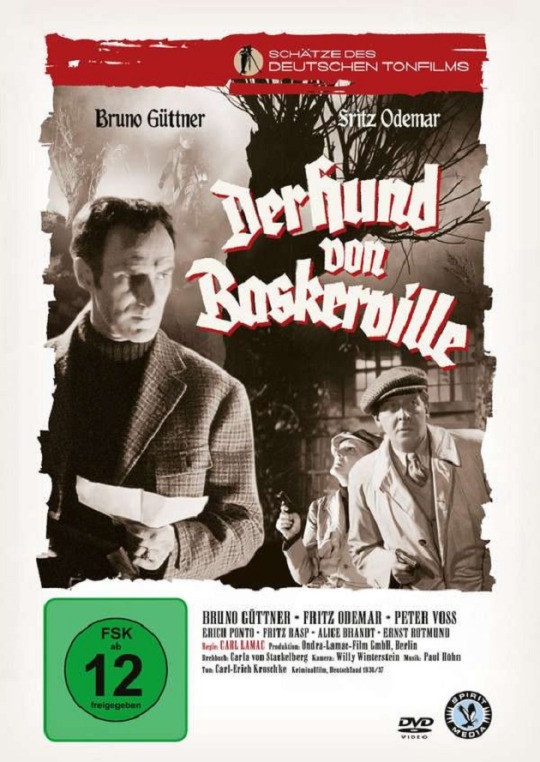
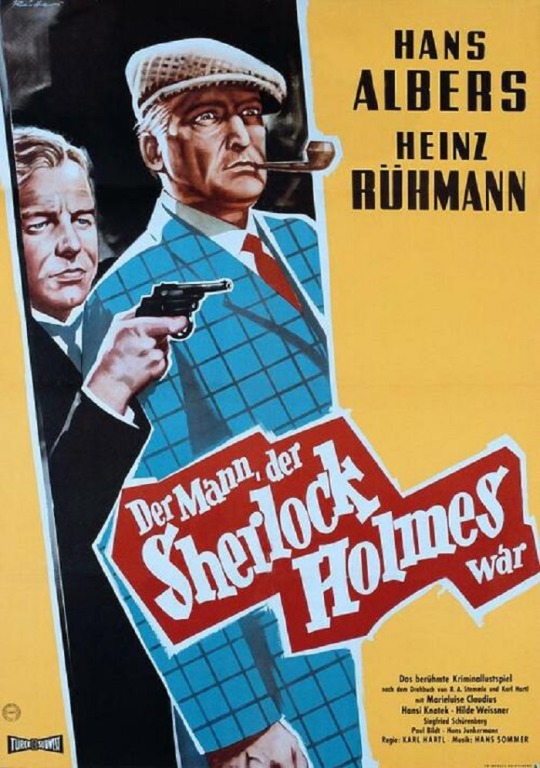
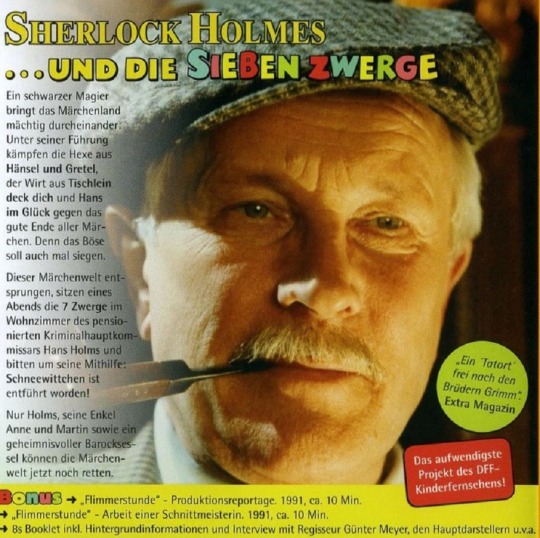
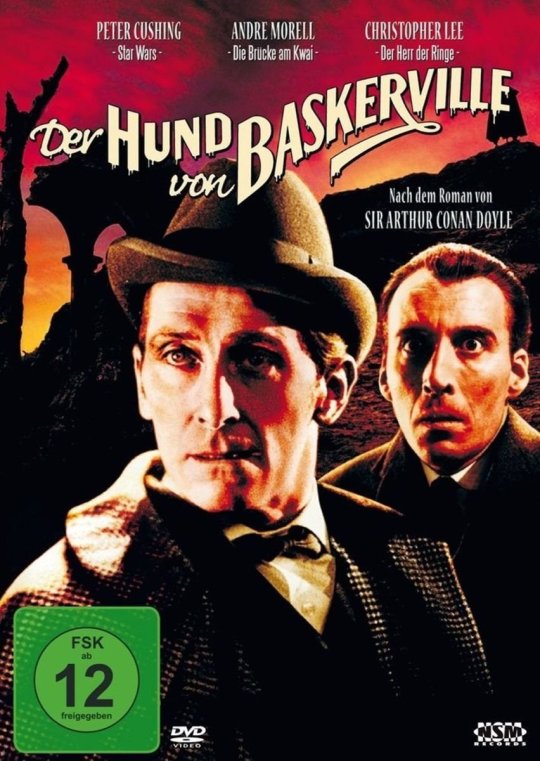
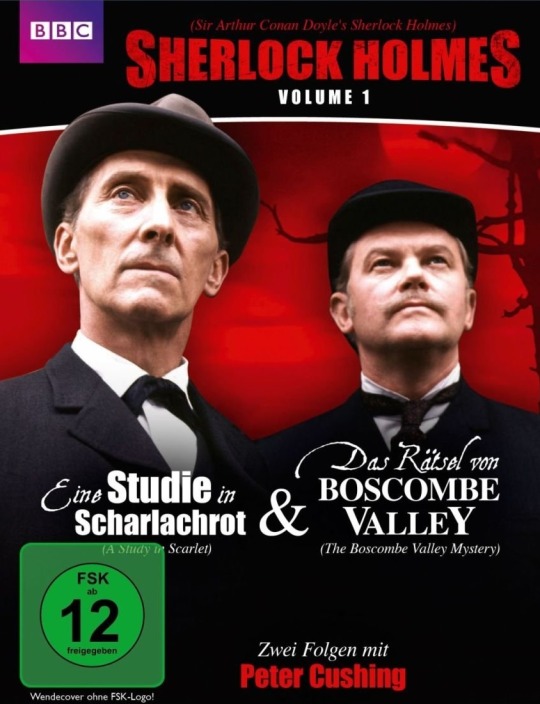

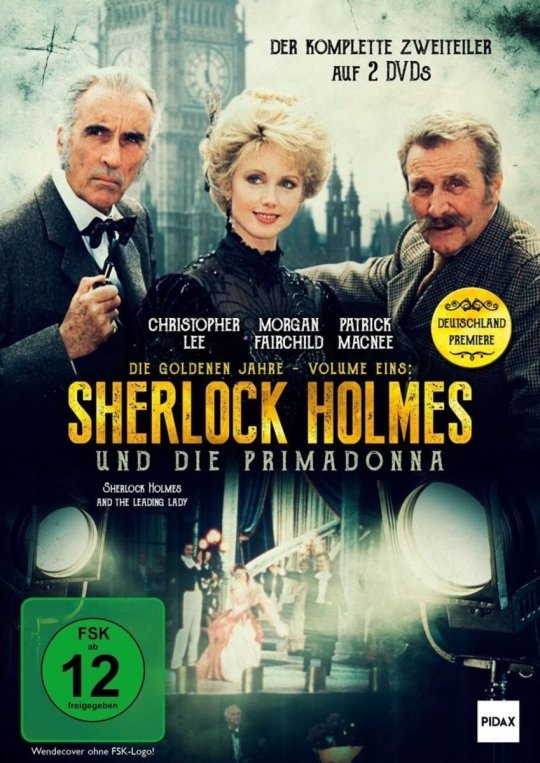
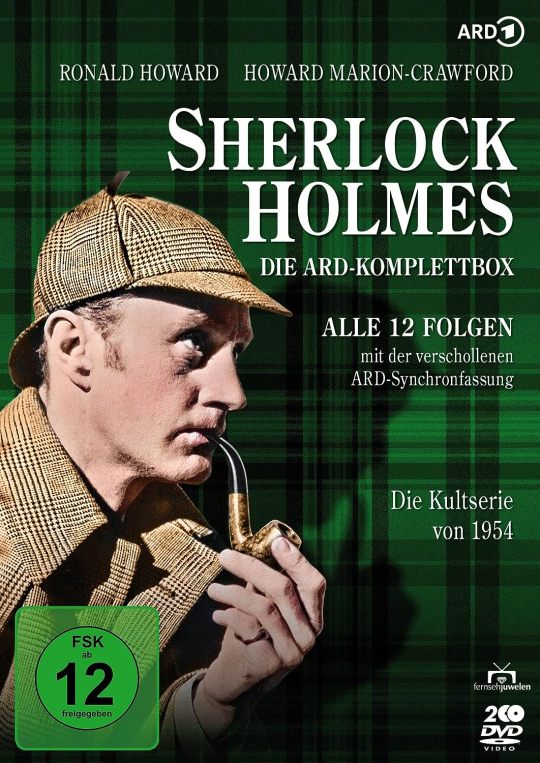
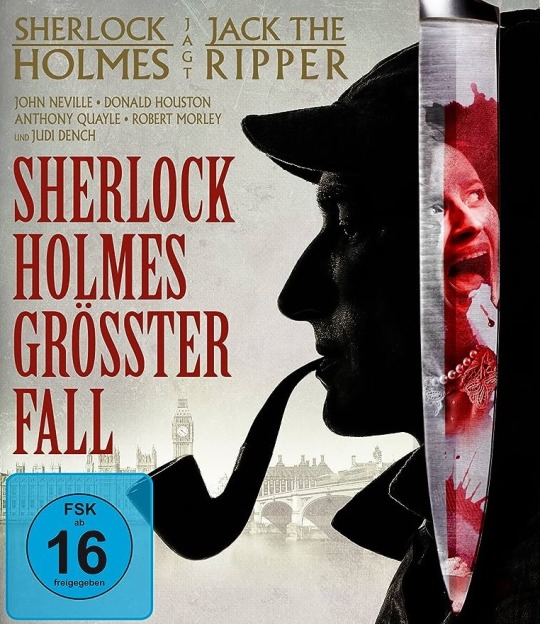
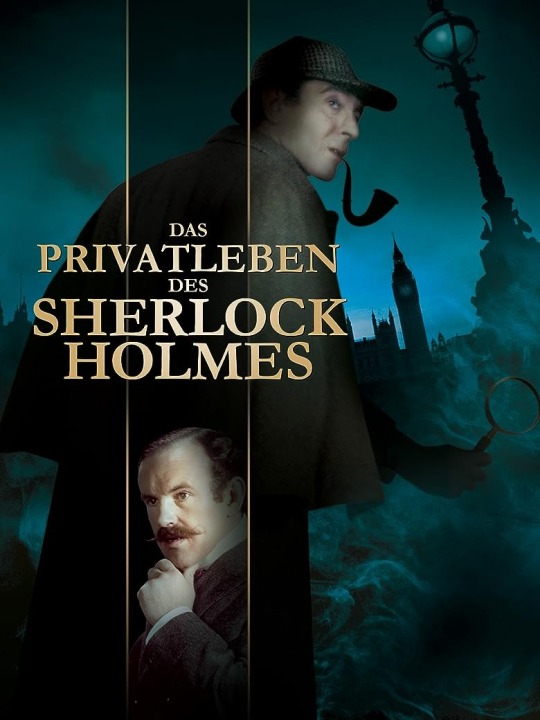

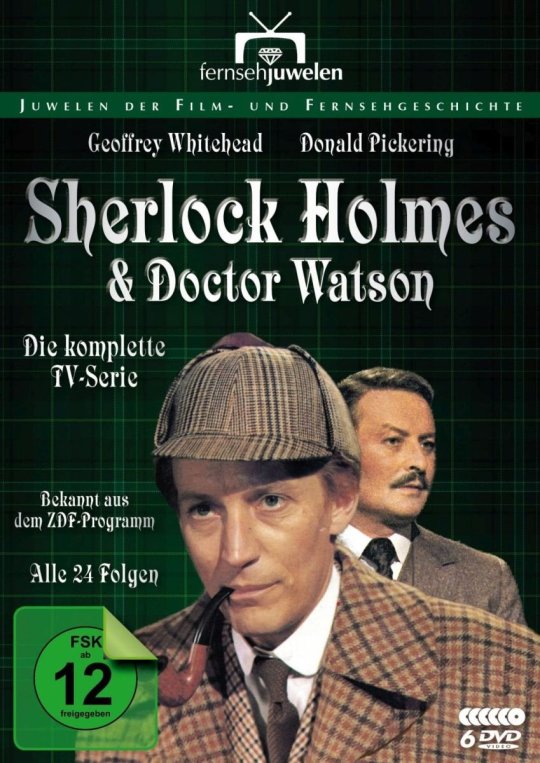
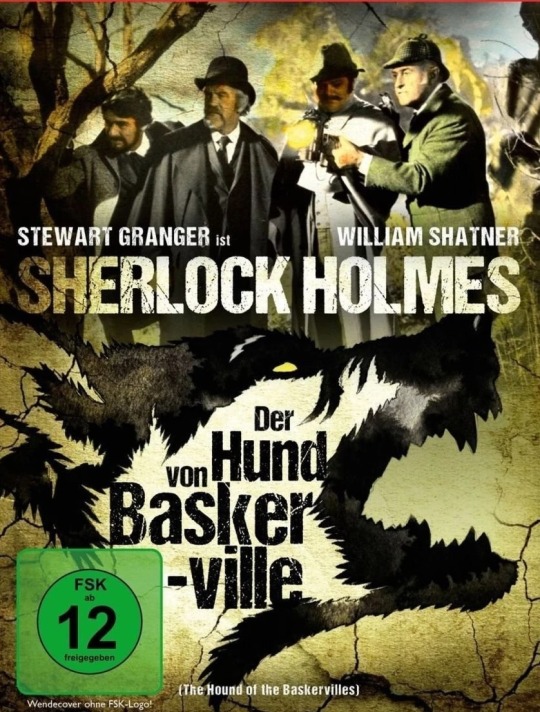
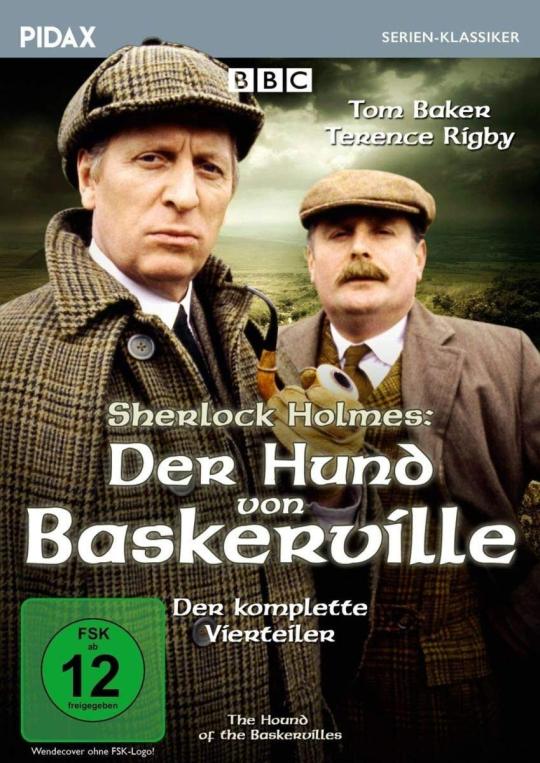
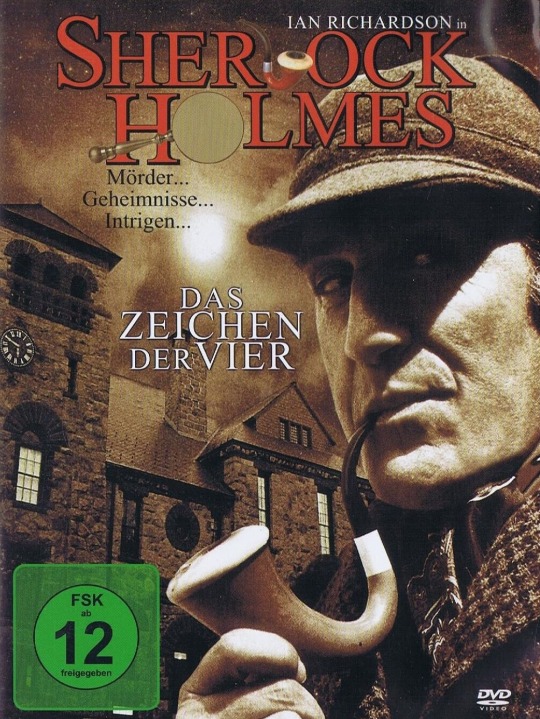

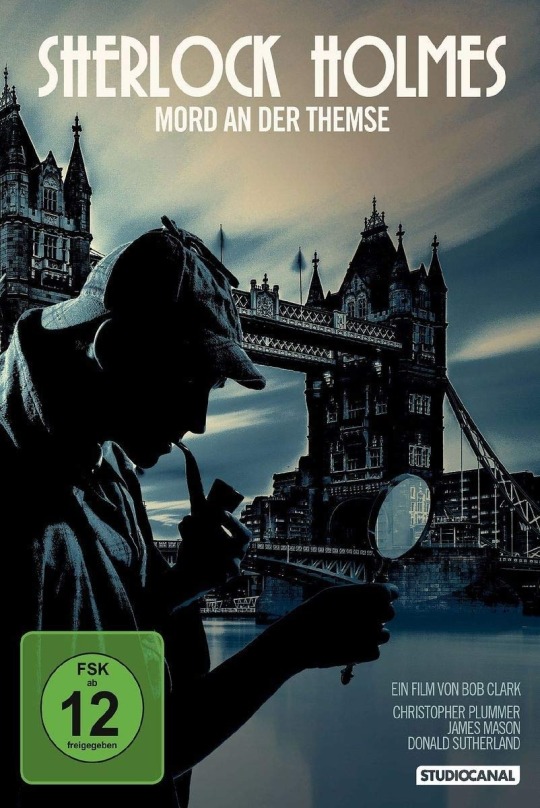
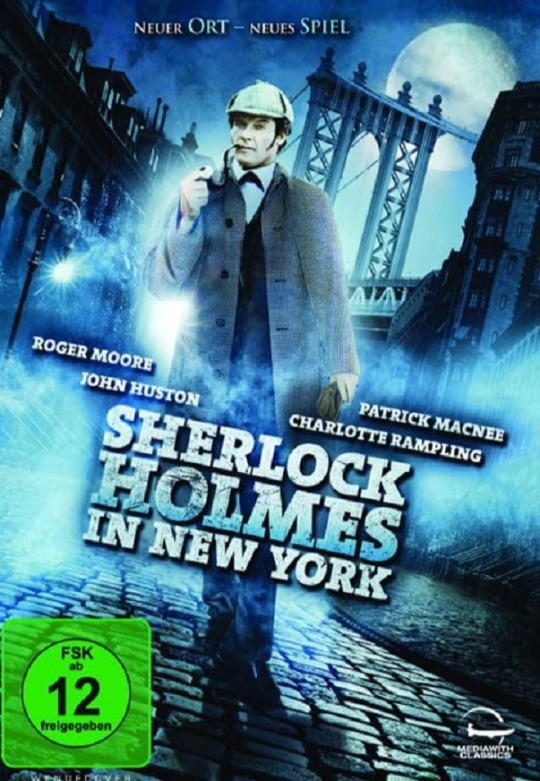
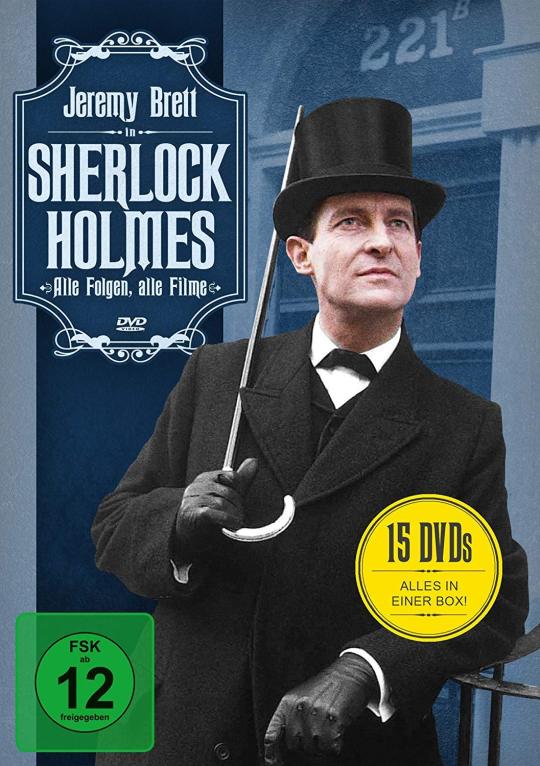

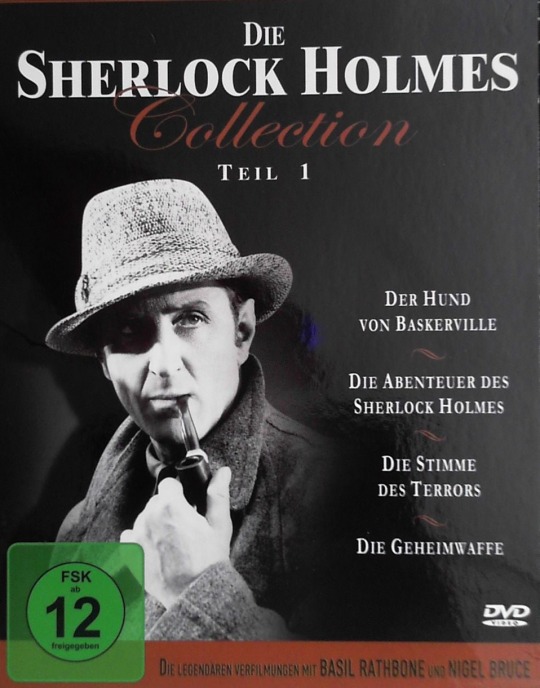
Sherlock Holmes and his faithful friend Dr. Watson have a very long tradition over here in Germany. Personally I’m an avid fan since my teens when I watched “The Hound of the Baskervilles” (1939) starring the immortal Basil Rathbone and Nigel Bruce when it was first broadcast on East German television in 1984.
Nearly all important film adaptions of the adventures of Sherlock Holmes and Dr. Watson have been dubbed and broadcast in Germany either in the cinema or in television. Here are a few examples:
In 1969 and in the early and mid Eighties East German television first dubbed and broadcast nearly all movies starring Basil Rathbone and Nigel Bruce. All films about the Nazi issue were only dubbed after the fall of the wall. All films are relaesed on DVD and they are are frequently repeated. Theses films are so hugely popular over here that Basil Rathbone is considered as the epitome of Sherlock Holmes by most viewers. For me personally he is the reason for my lifelong enthusiasm for Sherlock Holmes. “The Hound of the Baskvervilles” in the first German dubbed version from 1984: https://youtu.be/sD9M7pxP7Nk
In the early and mid Eighties East German television dubbed and broadcast the Russian television series starring Vasily Livanov and Vitaly Solomin. It was very well received but never hugely popular in the former GDR and was never repeated since its premiere. This series was never broadcast in West German television, Sadly not all dubbed films still exist in the archives but the remaining ones have been released on three DVDs in 2019 in the German version. As for me I simply love these two wonderful actors in these roles and so I made a video tribute in honour to their unforgettable portrayals: https://youtu.be/0jaSdOrntDc
The miniseries “The Hound of the Baskervilles” (1982) starring Tom Baker and Terence Rigby as Holmes and Watson were dubbed and broadcast at East German television in 1985.
In the mid and late eighties East German television dubbed and broadcast the Granada series starring Jeremy Brett as Sherlock Holmes. The series didn't achieve anywhere near the popularity with the general public as it enjoys in the English-speaking world. The series was only very rarely repeated but is now completly available on DVD.
The Hammer film “The Hound of the Baskervilles” (1959) starring Peter Cushing as Sherlock Holmes and André Morell as Dr. Watson was a great success in West Germany. The German dubbed version can be watched here: https://youtu.be/SWgtjG8O_qQ The television series starring Peter Cushing and Nigel Stock as Holmes and Watson was never broadcast on German television. The episodes were only dubbed for DVD in 2017.
In 1962 Terence Fisher directed the movie “Sherlock Holmes und das Halsband des Todes” (Sherlock Holmes and the Deadly Necklace”) starring Christopher Lee as Sherlock Holmes and Thorley Walters as Dr. Watson. The cast included numerous German and Austrian actors includig Hans Söhnker (1903 - 1981) as Professor Moriarty. Fun fact: actor Harry Wüstenhagen, who dubbed Christopher Lee in this movie also dubbed Ian Richardson, John Neville and Nicol Williams in their portrayals of Sherlock Holmes. This movie is available on DVD as well as the other ones I mentioned.
“Murder by Decree” (1979) starring Christopher Plummer and James Mason as Holmes and Watson was dubbed in West Germany and called “Mord an der Themse” (“Murder at the Thames”). It is available on DVD. The German dubbed version can be watched here: https://youtu.be/AANCR2K17F0
In 1982 West German television dubbed and broadcast the series “Sherlock Holmes and Doctor Watson” starring Geoffrey Whitehead and Donald Pickering. It was quite a success but only very rarely repeated. Meanwhile it is available on DVD. German dubbed episodes can be watched on YouTube: https
Sherlock Holmes in Germany
Alwin Neuß (1879 - 1935) was the first German actor to play the master detective in a movie. In 1914 he played Sherlock Holmes in “Der Hund von Baskerville” (”The Hound of the Baskervilles”). This silent movie was so successful that three sequels were made between 1914 and 1915. Oddly enough Dr. Watson does not appear in them at all. The first film can be watched here: https://youtu.be/PMhVAqef2nY
"Der Hund von Baskerville" (“The Hound of the Baskervilles”) made in 1929 is the last German silent movie about an adventure of Sherlock Holmes. It was directed by Richard Oswald (1880 - 1963), who also directed a German version of "The Hound of the Baskervilles" with three sequels (1914/15) starring Alwin Neuß. Oswald also wrote the screenplay for the very first film version of “The Hound of the Baskervilles” in 1914 which was directed by Rudolf Meinert. The cast is international: an American actor as Sherlock Holmes, a Russian actor as Dr. Watson, a German actor as Stapleton, an Italian actor as Sir Henry Baskerville, an Austrian actress as Beryl Stapleton, an Austrian actor as Dr. Mortimer and a German-Baltic actor as Barrymore. Remarkably, Fritz Rasp (1891 - 1976), who portrays the demonic Stapleton in this movie, plays the servant Barrymore in the sound film version "Der Hund von Baskerville" from 1937. This version is available on DVD and can be watched on YouTube: https://youtu.be/dOO1BwcpP_g
The sound film "Der Hund von Baskerville" (“The Hound of the Baskervilles”) was made in 1937 by Czech director Carl Lamač. The film has a great atmosphere and a cast of then very popular German actors. Especially Erich Ponto (to foreign film viewers very well known for his sinister role as Dr. Winkel in “The Third Man”) as Stapleton and Fritz Rasp (who mostly played sinister roles during his long film career) are great. Unfortunately actor Bruno Güttner (1909 - 1945) as Sherlock Holmes is pretty bland in his role, he even was dubbed by a more experienced actor in this film. Fritz Odemar (1890 - 1955) gives a good and amusing performance as Dr. Watson and does not portray him as a buffon. The movie is available on DVD and can be watched on YouTube: https://youtu.be/XrbMR9NZkVc
“Der Mann, der Sherlock Holmes war” (“The man who was Sherlock Holmes”) (1937) is a crime comedy directed by Austrian director Karl Hartl. The film starres Hans Albers as Morris Flynn and Heinz Rühmann as Macky McPherson. Albers (1891 - 1960) and Rühmann (1902 - 1994) were two of the most popular German actors at that time, and they are still very popular over here. The film deals with two broke English private detectives who decide to pose as Sherlock Holmes and Dr. Watson to get lucrative jobs. The official authorities obviously do not know that the English master detective and his friend are only products of the imagination of writer Sir Arthur Conan Doyle and want them to to solve the theft of the Red and the Blue Mauritius. When their real identity is established, they are taken to court for fraud. Only now writer Conan Doyle (played by actor Paul Bildt without a moustache) declares that he is the spiritual father of Holmes and Watson. As he is very satisfied with the appearance of Flynn and McPherson, they are acquitted by the court. The false Holmes and Watson even sing a song called “Jawohl, meine Herr’n” (“Yes, gentlemen”) while taking a bath. This crime comedy is very entertaining, I can't find any hints of the Nazi period it was made. The movie was released on DVD and can be watched on YouTube: https://youtu.be/vWz-ZYIKsEI
Altough Holmes and Watson were immensly popular in East Germany there was never made a movie nor a television film or series especially about them. There are only exist spoofs.
In the Seventies the drawing of the lottery numbers were enriched in East German television with short films of different genres. When the number 19 was drawn it was always a humourous crime film. In three of them appaered the English master detective Sherlock Holmes and his faithful friend Dr. Watson. In "James, der Butler" ("James, the butler") we see Ezard Haußmann, who later dubbed Vasily Livanov in "The Hound of the Baskervilles", and Hannes Stelzer. In the monochrome version of "Spuk im Schloss" ("Haunting in the castle") Jürgen Frohriep and Horst Torka played Holmes and Watson. Torka repeated his role as Watson in a new and colorized version of the same story while Alfred Struwe played Sherlock Holmes. These episodes are part of the DVD edition “Die Tele-Lotto Kurzkrimis”. Alfred Struwe returned to the role of Sherlock Holmes in 1979, when he played in a spoof with the absurd title "Kille Kille Händchen" ("Kill, kill little hand"). Photos of it can be seen here: https://www.tumblr.com/flammentanz/626097658197622784/completely-unknown-german-sherlock-holmes-in-the?source=share
The East German children movie “Unternehmen Geigenkasten” (“Operation violin case”) made in 1984 deals with two school boys who want to solve crimes like Holmes and Watson after they have seen “Der Mann, der Sherlock Holmes war” on television. This film can be watched here: https://youtu.be/5CDlfPl6ibU
“Sherlock Holmes und die sieben Zwerge” (“Sherlock Holmes and the Seven Dwarfs”) made in 1992 by director Günter meyer was one of the last big production of East German television after the fall of the wall. The eight part children series starres Alfred Müller (1926 - 2010) - a big star in East Germany - as newly retired Detective Inspector Hans Holms (the only real connection to the master detective is his name and sometimes his clothings) who looks after his grandchildren Anne and Martin while his daughter and his son-in-law are abroad. With the help of a magical armchair, Holms and his grandchildren can travel to Wonderland, where they are inter alia asked by the seven dwarfs to search for the kidnapped Snow White and meet other fairy tale characters. Their great adversary in all adventures is a demonic black magician. The whole series is available on DVD. The trailer can be watched here: https://youtu.be/blrc8cE6jSk
For a serises about famous detectives the television movie “Sherlock Holmes liegt im Sterben” (“Sherlock Holmes is dying”) was made for the West German television in 1954. It starres Ernst Fritz Fürbringer (1900 - 1988) as Sherlock Holmes and Harald Mannl (1904 - 1964) as Dr. Watson. The complete movie is lost, there is only this fragment that still exists: https://youtu.be/LGvELtv6Q10
“Der Hund von Baskerville” (“The Hound of the Baskervilles”) was made for West German televsion in 1955. It was directed by Fritz Umgelter and starres Wolf Ackva (1911 - 2000) as Sherlock Holmes and Arnulf Schröder(1903 - 1960) as Dr. Watson. I don’t know if this movie still exists in the archives.
“Das Zeichen der Vier” (“The Sign of Four”) was made for West German television in 1974 starring German actor Rolf Becker (born in 1935) and French actor Roger Lumont (born in 1934). It was never repearted since, and I don't know if it still exists in the archives. Here are Becker and Lumont:
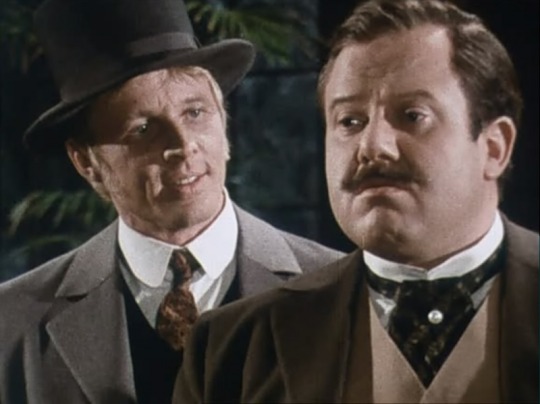
In 1966 the television movie “Conan Doyle und der Fall Edalji” (“Conan Doyle and the case Edalji”) directed by Karlheinz Bieber was made. It starres Paul Klinger (1907 - 1971) - who mostly played likeable roles and was very popular because of it in Germany (because of his sonorous voice he also was a verya renowned voice actor) - as Sir Arthur Conan Doyle. The film is based on facts that took place from 1903 until 1907. Young Indian solictior George Edalji was exposed to racist hostilities and was wrongly accused of animal mutilations. Arthur Conan Doyle made his own investigations which led to an acquittal of Edalji. In the movie Conan Doyle uses the methods of Sherlock Holmes to solve the case. The film is available on DVD and can be watched on YouTube: https://youtu.be/32H3PmBcJrM Paul Klinger as Sir Arthur Conan Doyle:
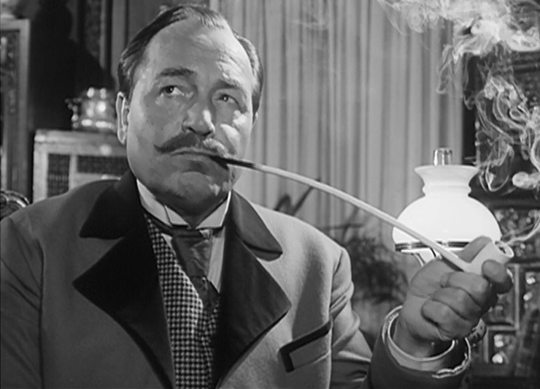
In 1968 Germany got its own Sherlock Holmes and Dr. Watson at last. In 1967 the WDR (Westdeutscher Rundfunk), a local TV channel of the West German television, produced a six episode television series about the English master detective Sherlock Holmes. Strangely enough, the series was not broadcast under the title “Sherlock Holmes” but the opening credits name the author Arthur Conan Doyle. The series was based on translated scripts written for the BBC series starring Douglas Wilmer. The series was first aired on Sunday afternoons from from October 1, 1967 to March 18, 1968.
Erich Schellow (1915 - 1995) - actually a theater star, that only rarely appeared in movies and on television (the critic Friedrich Luft said about him “He speaks like a God!”) played Sherlock Holmes, while his faithful friend Dr. John H. Watson was played by Paul Edwin Roth (1918 - 1985). The actors knew each other from their theater work in Berlin and got along very well during the filming.
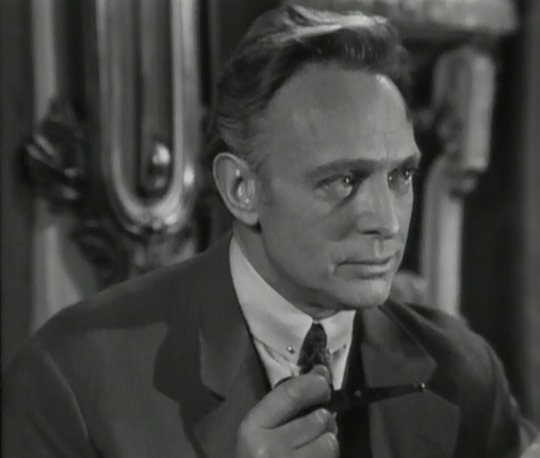
Paul May, a renowned director in film and television with a long-standig career, had a certain idea of Sherlock Holmes from the start. He wanted an impeccable, dignified, and noble master detective. To create a contrast to other television detectives at that time May avoided any action scenes. Erich Schellow wanted to play a bit more depraved Holmes including the use of cocaine but May refused strictly. In 1991 Erich Schellow was made an honorary member of the German Sherlock Holmes Society.
Paul Edwin Roth were allowed more liberties to portray Dr. Watson and he gladly took the opportunity. He is not a buffoon but instead he is amusing and witty (sometimes he even philosophizes), has a perfect name and address memory, he knows how to handle a weapon (usually his army revolver) and is a faithful friend in all situations. His favorite words are “very interesting”, a fact on which he comments ironically in “Das Haus bei den Blutbuchen” (“The Copper Beeches”)
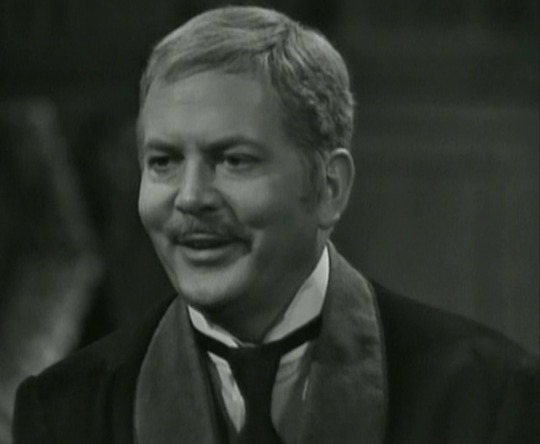
While the use of cocaine was refused by the director, the consumption of tobacco and alcohol by Sherlock Holmes and Dr. Watson is immense. Even dear Mrs. Hudson (Austrian actress Manja Kafka), who is not only a devoted maid (not a landlady as she actually is) but also amusingly cheeky, is hard-drinking. The running gag within the series is that the cane of the umbrella of Dr. Watson serves as a vessel for alcoholic beverages.
It’s incomprehensible that this wonderful series was only repeated once in 1991 and never since. Sadly Germany’s Sherlock Holmes was never given the the attention and appreciation he deserves. Fortunately this gem was released on DVD in 2012 and re-released in 2021.
For any information about Erich Schellow and Paul Edwin Roth as Holmes and Watson please check my blog.
youtube
youtube
#sherlock holmes#dr. watson#sherlock holmes in germany#german sherlock holmes#sorry for any possible mistakes#english is not my first language
30 notes
·
View notes
Text
youtube
A Legendary Snapshot: The Electrifying Budo of Yoshimichi Sato Sensei
If you close your eyes and imagine the roar of the crowd, the echo of metal against wood, and the snap of a perfectly executed stance, you might find yourself in the midst of a classic Sports Illustrated spread from an era long gone. The 1970s were the pinnacle of high-octane sports culture, where athleticism met artistry in ways that still inspire fans decades later. Now, imagine this energy distilled into a single black-and-white photograph—a timeless frame capturing Yoshimichi Sato Sensei demonstrating the lethal grace of Budo. His Sai glints under the lights; his Bo cuts through the air with authoritative power. The hush of the onlookers betrays an unspoken reverence. Each movement is a testament to discipline, training, and an unbreakable spirit. Indeed, this remastered classical material of Yoshimichi Sato Sensei in black and white offers more than just a historic look back; it’s a living, breathing tribute to the enduring power of martial arts.
From the perspective of a martial arts aficionado, there’s nothing quite like witnessing a demonstration of vintage Budo in action. But even if you’re a casual observer, or a sports fan looking for that burst of adrenaline that only a Sports Illustrated–caliber event can deliver, the visual and emotional impact of Sato Sensei’s performance is undeniable. In this remastered footage, he moves with uncanny precision. The Sai—those short, pronged weapons—glint menacingly, capturing the aura of a different time and place. With every block, strike, and twist of the wrist, Sato Sensei seems to defy the limitations of the human body. There is poetry in the motion, a fluidity that belies the inherent danger of the weapons he wields. Then comes the Bo, that long staff that can reach out and dominate an encounter before an opponent even closes in. In Sato Sensei’s hands, it’s like a maestro’s baton: every shift in stance and angle orchestrates a new possibility for defense and offense.
We often talk about the 1970s with a sense of nostalgia. This decade saw the rise of new fitness movements and a renaissance of global sports. Martial arts exploded in popularity—films starring iconic figures like Bruce Lee swept across continents, capturing the hearts of mainstream audiences. But while Hollywood glamorized the spectacle, real practitioners like Yoshimichi Sato Sensei quietly labored in the dojo, honing their craft to a level that transcended cinematic flair. For the serious student of Budo, whether it’s Karate, Kobudo, or any number of related disciplines, the 1970s were a time when lineage, respect, and tradition were still front and center. There were fewer cameras, fewer editing tricks, and fewer ways to ‘doctor’ a performance. Skill spoke for itself, and Sato Sensei’s skill speaks volumes.
When you watch this remastered classical footage, the first thing you notice is how the black-and-white film intensifies the experience. It strips away the distractions of color, focusing your attention on shape, form, and technique. Every bead of sweat on Sato Sensei’s brow seems highlighted, telling the story of a seasoned veteran who has poured years of discipline into this moment. The arcs of the weapons come alive against the stark background. The Sai’s triple-pronged silhouette stands out like a calligrapher’s flourish on white parchment. The Bo’s straight lines carve the air with decisive authority. You can almost hear the collective gasp of the spectators who, even in a decade saturated with martial arts intrigue, knew they were witnessing something special.
In the world of sports commentary, there’s nothing more riveting than a performance that transcends its immediate environment. We love the underdog stories, the record-breaking achievements, the legendary coaches who can change the game in a heartbeat. But there’s also a special place in our sports pantheon for displays that pay homage to time-honored traditions. Think of the stealthy fluidity of a gymnast’s floor routine, the mesmerizing footwork of a champion boxer, or the graceful arcs of a figure skater’s triple axel. While these feats may come from different sports, they share a universal allure: the power of discipline and mastery to inspire an audience. Yoshimichi Sato Sensei’s demonstration is exactly that kind of performance. It’s a piece of living history, a demonstration of what’s possible when decades of training meet an unquenchable thirst for excellence.
Sato Sensei’s skill set in Sai and Bo can serve as a window into the broader universe of Budo. Budo, at its core, isn’t just about fighting or self-defense—it’s a way of life, encompassing character development, physical conditioning, and moral ethics. Many of us look at sports primarily as entertainment, but anyone who’s stepped onto the mat knows that practice sessions can be grueling, repetitive, and often humbling. Yet it’s exactly in that grind where martial artists find their center, where they learn respect not only for their weapons, but also for the traditions and teachings passed down through generations. Watching Sato Sensei perform in the 1970s is like gazing into a portal that reveals the fruits of that labor.
We mustn’t forget the supporting cast in this black-and-white spectacle: the eager eyes of students and spectators, the hushed reverence in the dojo, and the synergy that occurs when a master shares his craft. In many ways, the presence of an audience shapes the performance. When a martial artist knows that people are watching, especially if those people include peers and students, there’s a heightened sense of responsibility to honor the art form. This demonstration isn’t just about personal glory—it’s about preserving and passing on a piece of cultural and historical significance. Decades later, that sense of responsibility is still palpable. The footage, remastered for new generations, serves as a bridge that connects the old guard to the new.
When Sports Illustrated covers a game, a match, or a performer at the top of their field, the hallmark is detail and storytelling. We don’t just see the big plays; we get to know the athlete, the coach, the strategy, the backstory that led to that moment. Likewise, it’s important to contextualize Sato Sensei’s demonstration. The Sai and Bo weren’t the only stars of the show. During the 1970s, dojos were breeding grounds for multi-disciplinary skills. Practitioners trained in everything from nunchaku to katana, not to mention the unarmed forms like Karate or Judo. The synergy between various weapons and empty-hand techniques underscores a holistic approach to combat that Budo is famous for. Sato Sensei, with his unstoppable Sai and commanding Bo, encapsulated that synergy perfectly.
Let’s also highlight the physicality required. It’s one thing to wave around a staff; it’s another to channel every ounce of one’s body into each strike and block. In high-level Budo, every movement starts from the feet—the stance is the foundation. Power travels up through the core and finally extends to the arms and hands. When wielding a Sai or a Bo, the martial artist must harmonize speed, accuracy, and control in a matter of seconds. Overextension can lead to injury or a fatal opening in real combat. Under-commitment can render an attack ineffective. Watching Sato Sensei handle these nuances so effortlessly speaks to the years of sweat equity he invested in his training.
Yet for all the physical prowess on display, one of the most captivating aspects of this remastered footage is the spirit behind it. Martial arts masters often speak of ‘kime,’ or the focus and energy that culminates in a single, decisive action. You can see that intensity etched into Sato Sensei’s expression. His gaze is unwavering, his posture unyielding, and his technique uncompromising. Every flick of the wrist, every pivot of the hips, is an extension of his will. This is what makes a demonstration like this so special—it’s not just a show; it’s a testament to personal mastery, a narrative of a life dedicated to the pursuit of Budo excellence.
In an era where everything is digital, filtered, and often fleeting, this black-and-white moment from the 1970s offers a refreshing jolt of authenticity. It reminds us that certain values—hard work, dedication, respect—are timeless. For those who are new to martial arts, or simply intrigued by the storied history of athletic achievement, witnessing Yoshimichi Sato Sensei’s demonstration can ignite a spark of curiosity. For seasoned practitioners, it can inspire a renewed commitment to the art form. And for the sports enthusiast who thrives on jaw-dropping performances, it delivers a show worthy of prime coverage in any era.
When the lights dim and the last echo of the Sai fades away, we are left with an indelible mark. The decade might have been the 1970s, the film might be black and white, and the demonstration might be contained to a few frames of footage—but the impact spans generations. That’s the true power of sports and martial arts alike: the ability to transcend boundaries of time, culture, and even technology. Watching Sato Sensei’s Budo demonstration is like opening a Sports Illustrated from a dusty archive—suddenly, you’re transported to a front-row seat of a historic moment. You feel the intensity, marvel at the mastery, and walk away with a renewed appreciation for what humans can accomplish when they fuse passion.
2 notes
·
View notes
Text
Richard Moll Tribute: Batman TAS Review: Two-Face Parts 1 and 2 (Comission for WeirdKev27)
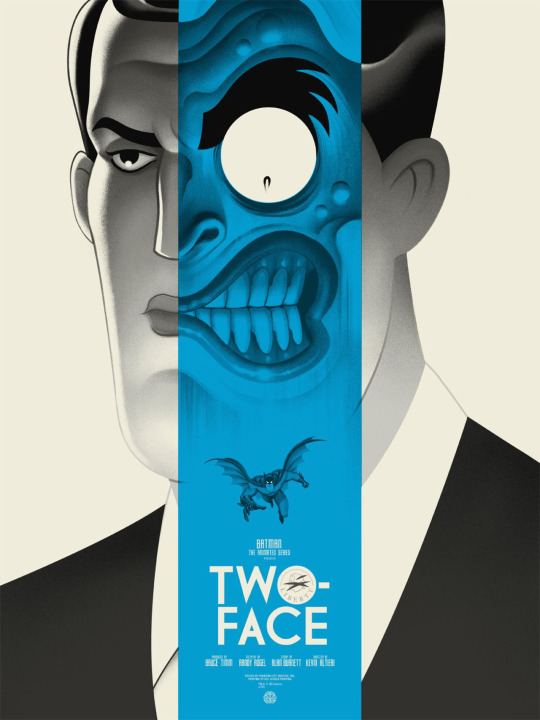
In Loving Memory of Richard Moll 1943-2023 Just one year. Just one damn year after loosing Kevin Conroy another treasured member of the Batman The Animated Series Cast passes. I wasn't expecting this and i'm hoping with all I got this isn't a trend.
While Kevin requested a tribute for Moll it was an easy request: While I sadly can't do a tribute for every tragic death as my schedule is packed, it's why poor Matthew Perry didn't get one even though his death is also truly gutting, but Moll is an actor I loved and still deeply repsect and I'm proud to honor him.
Ironically I first became a fan of Moll not thorugh two face, who I liked fine but wasn't really a faviorite of mine yet, but through his other famous roll that came before this: Baliff Bull Shanon on the NBC sitcom Night Court
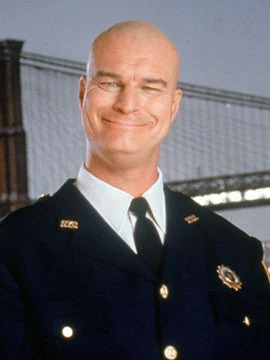
If you haven't seen Night Court it's free on freevee and amazon prime so please do when your done here, but for the short version it was a sitcom about Harry Stone, a young judge who was both a goofy prankster and a kind, wise man who judged fairly and always tried to help his staff, played by the sadly also late Harry Anderson.
Bull was big, strong.. but also entirely kind and goofy. He had a childlike sense of wonder to him, missed the point often, but refrenshingly for a sticom he wasn't portrayed as a complete idiot, having a lot of emotinal intelgence. He was simply oblivious. And while VERY sweet he had a habit of reminding people, paitcuarly dan the court's prosectuer and sex pest, that he had his job for damn good reason. Moll was a treasure and never lost his step in the roll though sadly he declined to return for the recent revival and now never will.
So it suprised me when I found out Moll was Harvey all this time. It wasn't that Moll lacked talent or even him doing something after night court, he'd done plenty. It was more the range, perfectly playing Harvey in all the forms the show gave him: early on as bruce's pepppy friend, as a man grappling with his split personality in these episodes, as Harvey's brutal personality.. and later as a horrifying combo of the two as two face. All distinct, all using a diffrent vocal tone, all great.
So we're honoring his finest performance. So join me to remmeber Richard Moll under the cut as Harvey Dent grapples with the other person in the mirror.. and both become something else.
One touch i've always liked about Batman TAS is that Harvey was a recurring character before this two parter. It was only two episodes, On Leather Wings and Pretty Poison, but the former was a nice cameo to show he exists and the latter really showed off Harvey and Bruce's friendship, their easy report, the hint they had a long history we were never privy to, and it made the stakes higher when Harvey got poisoned by Ivy. It's remakrable how much legwork that one episode did to setting up this one. You can watch one without the other, Batman TAS is still largely episodic and one of the best shows ever at pulling that off... but the two enrich each other. While Batman TAS wasn't the first to try and have Harvey Dent around before he got faced, Batman 1989 ATTEMPTED it but then didn't bring back Billy Dee Williams and retconned Harvey to be Tommy Lee Jones because fuck me I guess, it's the work i'd credit with popularizing it as the Long Halloween and the Dark Knight after it made sure to show us who harvey was BEFORE, which makes what he becomes that much more tragic, that Bruce didn't just loose an ally.. he lost a friend.
It also makes what we see at the top of the episode have even more weight: Harvey having a troubled dream as he's harassed by a shadowy version of himself with a growly voice flipping a coin. Harvey is only freed from his nightmare by his assitant Carlos, who informs him the raid they've been planning is on boys.
The target is one of Rupert Thorne's gambling dens.

For those who've forgotten this guy, Rupert was the series mafia presence, head of Gotham's organized crime and slimeball, played by John Vernon aka the dean from animal house aka the character that inspired the dean from futurama. Rupert is the perfect arch enemy for a pre face harvey: it's easy to arrest a guy who kidnaps the police on christmas day after rocketing out of his aslyum on a christmas tree, it's harder to arrest someone who covers his tracks.
It's also hard because Throne's men have a bunch of high end weaponry stockpiled in there including grenade launchers. Thankfully Bat beats Grenade as bruce decided to pitch in to help with his buddy's relection campaign, helping clean house to make it easier on the police. I also like the touch of Harvey being ambivilant, not against Batman's presence but not really cordinating with him like Gordon would.
Unfortunately one of the goons makes the mistake of taunting harvey... and that wakes up the other person. As it turns out Harvey has Disociative Identity Disorder, and his alter, big bad harv, is all of the anger Harvey's surppressed his whole life condensed into a person. And Big Bad Harv suckers the goon before nearly beating him to death, with Harvey waking up from the episode horrified and making a lame excuse. As if things weren't tense enough Rupert Throne's decided to do a bit of digging into Harvey's life: he's become too big a thorn in his side and the irony's a bit too much to swallow on that, so he has Candice, his right hand minon look into that.
We cut to Harvey giving a speech at a big campaign rally Bruce is throwing. It also brings me to Batman The Animated Series Version of bruce who I like a lot: instead of playing up his uselessness or just barely using the identity when necessary, this bruce is a bruce wayne I like to see: a philamprohist who still fights to help people. It makes hiding he's batman harder sure.. but it shows Bruce more as another side of who he is rather than a mask he wears because society won't let him go around beating up people in a mask all day every day.
At the party is Grace, Harvey's girlfriend who wants to bump it up to fiance. It's unknown just HOW long it's been since pretty poison but given Harvey was willing to marry Ivy after a week, it's on brand for him to jump into life alterting decisions and he makes it clear he only hasn't because he's busy trying to get reelected, not getting that the engagment would probably bump up his raitings but whatever. Grace is mostly here so Harvey has more to loose. She's the weakest part of the episode, only being there so Harvey has a love intrest to weep at what he's become when we already have bruce. Though given this was the 90's I woudln't be shocked if Fox wanted to give Harvey a case of the not gays.... which come on. Why WOULDN'T it make sense for Two-Face to be BI-Sexual. It fits too well. Like Batman giving oral.
Every party needs a pooper though and the pooper for Harvey's party is a phone call: THrones men are being let go as someone "misfiled" a warrant.
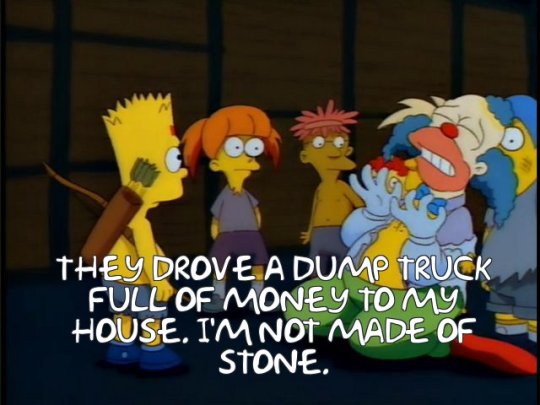
So naturally out goes the good harvey, in comes the Big Bad Harvey who straight up THROWS his assitant carlos into an ice sculpture cleaving the thing in two.

And nearly beating BRUCE up this time when Bruce tries to calm him down. It's only grace begging him to stop that brings back standard Harvey.
Bruce didn't get to be the world's greatest detective by ignoring the obvious , so he goes to talk to harvey .And I absoutely LOVE Bruce's attitude in this scene.. the man was almost punched in the face by his best friend.. and instead of raging against him or recoling in horror he runs up to help him, recognizing this wasn't just harvey flipping out, but something deeper, correctly guessing Harvey has some sort of mental illness and needs help.
And as someone with some mental illnesses and a neurotypical brain not helping either of them, I really like how the episode treats Harvey's illness. The talk about it has aged REALLY well: While it was even MORE stigmatized back then, Bruce's reaction to all of this is recommend Harvey get help and then be utterly PROUD when he finds out Harvey already is doing the work, it's just taking time and the pressure of being a public figure AND hunting a crime lord really isn't helping. Harvey is treated as he should be: as a man who needs help and is struggling with it, not as some monster but as a man who simply needs help after a childhood trauma left him with an extra guest in his head. Harvey is never accused for what Big Bad Harv does and while Big Bad Harv's actions are seen as awful, as they should, no one ever blames Harvey for them if they know. It's something I struggle with: I also have big freakouts where I can't control myeslf. Diffrent type as i'm still ME when it happens, but I can still relate to this episode and harvey's struggle of both letting his pride down to ask for help and worrying about what people would think despite getting therapy being entirely normal.
Unforutnely Candice overheard this as we cut to Harvey in sessoin with his psychatrist, Nora Crest. Nora is a wonderful therapist, helping harvey slowly and making it clear what Big Bad Harv does isn't his fault. She also draws BBH out to try and help manage him better. Unfortunately.... she fails to recognize that Big Bad Harv dosen't WANT to be managed, want to be locked away, or want Harvey to come back again and in the most horrifying display yet trashes Nora's office, breaks a window and tries to attack her before she undoes the hypnosis. Again it's done well as Nora simply misunderestimated HOW bad things were and while sh'es trying her best.. .as she puts it Harvey NEEDS to check himself into a hospital. And I love how that's not portrayed as a bad thing: A dire circumstance, but we've seen how bad harv is. She's not suggesting locking him up in arkham or anything drastic, she just wants him where he can get help and where big bad harv can't hurt people.
Ultimately what holds Harvey back... is a combination of pride and society itself. In a better world Harvey going in to get treatment after two public outbursts would be seen as a heroic act and he'd win the election. Sadly we don't live in that world and Harvey correctly fears the voters would just sterotype him as crazy and he'd loose the election. He TRIES to mitgate it by having more sessions an da reduced work schedule and it works to a point.. but it's clear it's putting a band-aid on an open wound.
This meatball mental surgery DOES enough to get Harvey through the election, and almost to propose to grace.. but sadly dosen't last as Thorne has stolen his medical files and wants a meeting. Once again it's not Harvey that's the issue.. it's that society won't accept that he NEEDS help and it's OKAY to get it. And Throne's all too happy to exploit it.
Thankfully for Harvey his best friend is batman, so Bruce is able to follow Harvey and put a tracker on the car he's taken in. Thorne makes the BOLD decision to confront the man whose DiD is shown to be triggered by extreme stress... in a remote room with only a few guards, only one of them actually armed, and mock his mental illness. We also find out WHY Harvey has DiD: as a kid he hit a bully in the face. Said bully wound up in the hospital and Harvey blaming himself vowed never to be angry again. Turns out it was apendcitis. Hence Big Bad Harv.
And unfortuantely for Harvey's future and Throne's present.... Big Bad Harv comes out. He does manage most of the thugs, with some bat help, but given whose origin this is.. you know this can't end well. And it dosen't: in a truly gutting moment Harvey rushes after Throne, the goon from earlier tries to fire.. and in stopping the guy batman accidently directs his fire at a power coupling in the factory, causing an explosion. Harvey Dent as we knew him .. is gone.
Some time later Harvey's in the hospital in bad shape, with doctors promising they'll restore him with plastic surgery. Instead... we get
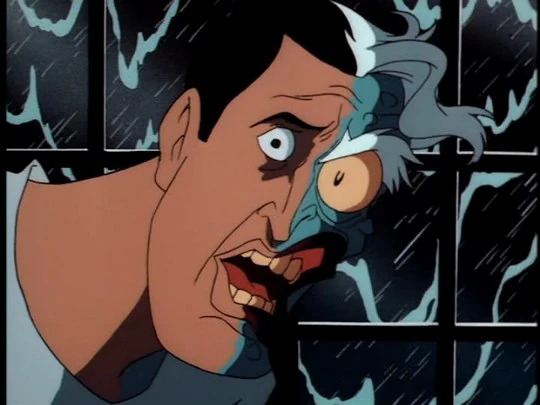
I know he was heavily burned, and that his face would be hard to fix.. but how did you think "make him look like a blue goblin man with a bigger eye on half his face" was EVER going to go down well. Does oscorp own this hospital?
While I joke, because i'm a goofy bastard, I do love the nod to Batman 89, with Harvey asking for a mirror in the same way as Jack Napier and Lisa Simpson... only instead of laughing he throughs a raging fit and then gapes in horror when his new visage makes his fiance pass out.
So thus ends part one. One last thing I want to note is how LITTLE batman is in this. Ther'es an action bit with bruce at the beginning of the episode and later at the climax. That's it. It's something TAS did a lot, having a more methodical build up before the third act is all I AM THE NIGHT, but it feels diffrent here as we aren't WITH bruce for most of the episode. He's still present and important to the plot, but he's a supporting character in Harvey Dent's story. There's no breaking things down with alfred, no break from the tragedy of Harvey Dent, and it's why the episode works so well. This isn't a Batman story yet.. it's Harvey Dents.
Part 2, naturally, splits time between both men as both go on their own journey. It's 6 months later and the man who was once Harvey dent has abandoned his old names: No more Harvey Dent, upstanding DA or Big Bad Harv, Harvey Dent's anger and hatred given shape and form... the two have merged. It's something I never noticed before till tv tropes pointed it out: Fitting his dual nature Two Face is a bit of both: he's aggressive, rageful, and quick to anger, berating his twin thugs when they go off script. He'd of killed them by now but damn can they belt a cover of Don't Pull Your Love
youtube
Yet we see a tactical side that just wasn't present in Big Bad Harv.. but was in harvey, with the raid being his idea and his attacks on thorne being calculated, using every bit of info on his operations Harvey ever aquiried but going outside a law he no longer belivies in. Two-Face is a new personality.. and a fairly haunted one.
He also naturally now has his gimmick, using coin flips to decide his decisions, hence why he hasn't seen grace in a while as the coin keeps telling him no. After all he lost, after all that happened he now belivies only in chance... the only justice left. And given the system allowed thorne to thrive while Harvey sacrficed his health, his time and ultimately who he was to stop him only to get nowhere.. it's hard not to see why.
It's what, once again, makes this work: it's not just Harvey's DiD that turned him into Two-Face. IT's the main cause, sure, but the regular Harvey still had an obessive, vengeful streak about him: he may of locked his anger away.. but he still hunted thorne, obessed over the case and put beating thorne over his own well being. Being DA was important, beating thorne was important.. but it wasn't worth loosing himself. He was doing the work, had he taken his doctor's advice and checked himself in.. Harvey may of been okay. He wouldn't of had the office but he'd have his mind and the love of his life. Now only rage and a determinatoin to destroy thorne remain.
Thorne naturally isn't taking this sitting down. He has some shit to throw around in anger dammit. After months of Two Face hitting him hard then fading away into the night he puts out a bounty: a million a face. And Cadance, being sneaky and what not, sets her self on the path to the moolah by pretending to be a cop and giving grace a tracker.
Meanwhile Bruce, naturally, is also doing pretty bad. In his dreams Harvey cries out to bruce asking "Why couldn't you save me?"... and Bruce has no answer.. nor one when his own father asks "WHy couldn't you save us son?" Once again Bruce has lost someone he cares about. And while with his parents the guilt isn't warranted, it was a random gunman and he wa sa children, you can see WHY he has it here: You can just feel Bruce replaying the moment he tackled the gunman, again, and again and again, thinking of all the ways he coudl've done it BETTER, all the ways that don't end in Harvey becoming Two Face. All the ways he should be BETTER. We know it was just an accident but Bruce.. can't accept it. He has to fix this, he has to save harvey from himself.
Harvey's decided enough fucking around. He's gotten Thorne weak enough, it's time for the killing stroke. Only Harvey isn't being THAT merciful: he COULD kill Thorne, but like any good super villian Twoey has a sense of irony: Thorne ruined his life and reputation, it's only fair Two-Face do the same
So TF and his minons raid a place where THorne has his most secure files, the ones that outline everything. YOu know your standard maffia macguffin. Bruce naturally shows up ... but tragically he can't help someone who dosen't want to be helped, a harsh lesson of the episode: Harvey is buried deep within two face, impossibly tangled with big bad harv. There's the possiblity he could become harvey again, but he has to want to. But all that's left in harvey is a want for revenge.
Batman does at least spot a pattern: all the clubs and establishments are two themed, and thus finds his hideout, Club Deuce. Unfortunately he's not the only one as Two Face finally decides to see Grace, who thinks the police would be genuinley invested in the health of someone with a mental illness
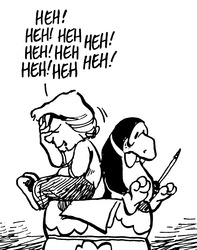
And triggers the signal. Grace almost gets through to harvey who starts out wearing.. this
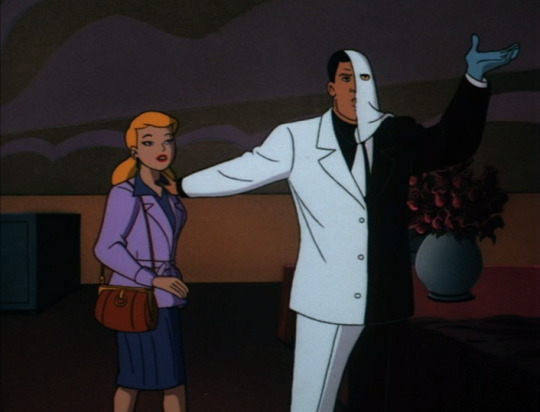
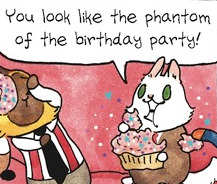
Grace takes it off, almost convinces him to get help.. then Thorne busts in
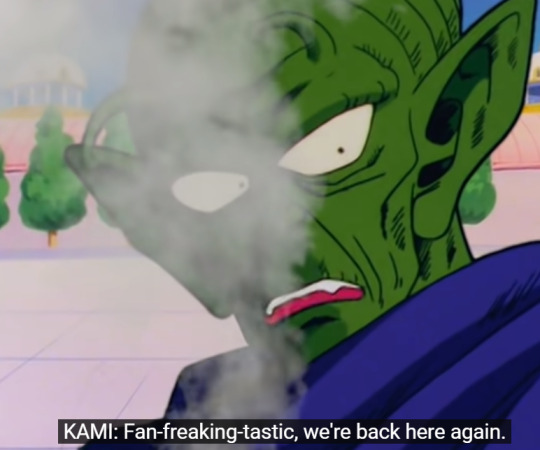
Thorne manages to ransom grace so he can get the files.. and then plans to just shoot everybody because Two Face was stupid to trust him. Thankfully it's time for the bat to make his big entrance, and our hero, villian protagnist and cardboard cutout clean house. Well okay Grace takes out Candance as is standard catfight protocol, but props to her for contributing.
It ends with Thorne in a chadelear and Harvey about to finish this. Bruce begs Two Face not to as there's no coming back from this.... but Two Face dosen't trust int he law anymore and Batman certainly hasn't finished off this son of a bitch, so he plans to play count the bullets.
How Batman stops him.. is creative as it is heartbreaking. When Two Face flips.. batman dumps a bunch of other silver dollars, stolen earlier in the ep, in. Two Face is paralized.. and Batman and Grace are left to mourn what they've lost. The episode ends somberly. No one won here: Thorne is still out there, Harvey is in arkham.. and all bruce can do is flip a coin himself into a wishing fountain.. and HOPE his friend can one day recover. It's all he has left, the same cruel fate his friend is now servant to.
So as you can tell Two-Face is a banger two parter and one of Batman TAS' best. Moll is spellbinding the whole damn time, playing all three versions of harvey perfectly, while Kevin Conroy gets some graet acting himself in both acts, as Bruce trying to be supportive.. and as the Bat desperately trying to save his friend. It's tight, gripping and a masterpiece. Check it out now, thanks for reading.. and rest in piece Richard. Thanks for giving us so much joy, so much sorrow.. and so much of you
#richard moll#batman#batman the animated series#bruce wayne#two face#harvey dent#animation#superheroes#dc comics#hbo max
18 notes
·
View notes
Text
Sammy Hagar doesn’t take the mean-spirited comments that David Lee Roth has made about the late Eddie Van Halen’s son Wolfgang Van Halen lightly.
While speaking with PEOPLE on Saturday ahead of MusiCares’ Person of the Year ceremony and concert held in honor of Jon Bon Jovi at the Los Angeles Convention Center, Hagar, 76, shared his reaction to the recent critical comments that Roth, 69, made about the bassist, 32, who played alongside his father in Van Halen from the time he was 15 in 2006 to 2020.
According to the Rock and Roll Hall of Famer, Roth’s negativity towards Wolfgang that he aired out in a viral YouTube video all comes down to “jealousy.”
“Look, if you really think about what he said, it's like do I sense a little tinge of jealousy in there or something?” Hagar, who was among the performers at Saturday’s MusiCares event, says.
“Does he feel like he's left out or something?” adds the hard rock legend.
“I mean, honestly, the only thing I can say without being cruel is he needs to find a new dispensary,” he jokingly says. “That one's not working for him.”
Roth originally expressed contempt toward the bass player and only son to Eddie and actress Valerie Bertinelli in a video rant shared on social media in late January. The video finds the former Van Halen vocalist mocking Wolfgang's skill and how he benefited from nepotism.
In the YouTube clip, Roth also alleges that Wolfgang claimed the singer didn’t pay attention to him on stage when they toured together and that he once threw out a woman — whom he thought was Roth’s girlfriend but was actually an accountant in charge of their tour’s payroll — at one of their shows.
"This Fuckin’ Kid,” he captioned a post he made to Instagram of the video.
Wolfgang, who also performs as Mammoth WVH, played in the lineup of Van Halen with Roth when he rejoined the iconic group in 2007 until they disbanded following the death of the lead guitarist at age 65 in 2020 after a years-long battle with cancer.
While Hagar exited the “Jump” band before the young rocker became a member, the two have remained in contact over the years and he told PEOPLE that he was excited to connect with him and see him perform at Saturday’s MusiCares event. (Mammoth WVH was also on the lineup, along with Bruce Springsteen, Shania Twain, Melissa Etheridge, Lainey Wilson, Jelly Roll and others.)
This summer, the “I Can’t Drive 55” singer will hit the road with fellow former Van Halen member Michael Anthony, guitarist Joe Satriani and drummer Jason Bonham to tour a set list largely made up of the music of Van Halen.
Shortly after the tour was announced late last year, Wolfgang shared that he approved of the tribute concert in an interview with iHeartRadio station Q104.3. He said, “Yeah, that's super cool, man. I'm stoked for it.”
Hagar has also opened up about feeling grateful that he was able to remedy his relationship with Eddie before he died.
"Well, to be able to have talked to Eddie and had a wonderful rapport with him on text, it means everything to me," the rocker told Fox News in a May 2023 interview. "If he would have died and we would have not ever said 'I love you' to each other again, I would feel really bad. I probably wouldn't be able to talk… I wouldn't be able to talk to you about it."
Despite their relationship being rocky for a period of time when Hagar departed the band, he added that it "means a lot" that he's able to "feel good about talking about being in Van Halen now."
#post van halen#people#people magazine#eddie van halen#sammy hagar#david lee roth#wolfgang van halen#mammoth wvh#2024#MusiCares#MusiCares’ Person of the Year#jon bon jovi#Valerie Bertinelli#interviews#news
5 notes
·
View notes
Text
Seiko 5 Sports Bruce Lee Limited Edition SRPK39
First introduced in 1968, the Seiko 5 Sports collection has brought durable and reliable mechanical watches to watch lovers around the world. In commemorating the 55th anniversary of the collection, Seiko introduces a limited-edition creation that pays tribute to Hong Kong-American film actor Bruce Lee, who wore 5 Sports during his lifetime: the Seiko 5 Sports Bruce Lee Limited Edition SRPK39.…

View On WordPress
#Bruce Lee#news#Press release#Seiko#Seiko 5 Sports#Seiko 5 Sports Bruce Lee Limited Edition#Seiko 5 Sports Bruce Lee Limited Edition SRPK39#SRPK39
6 notes
·
View notes
Text
EXPLORE HONGKONG

Dream destination: HONGKONG
Hong Kong has always been a favorite destination of tourists, especially of Filipino travelers, as it offers something for everyone--from attractions to food to shopping destinations.
“Hong Kong has always been close to the hearts of Filipino travelers and it is one of Philippines' top travel destinations of choice,” Hong Kong Tourism Board regional director of Southeast Asia Raymond Chan said during the "Marvels in Hong Kong" media event.
The pandemic put a pause on travel for the past two years, but with restrictions slowly easing up globally, tourists have a chance to visit Hong Kong again.
Chan noted that the "0+3 travel measures" is a “significant milestone for Hong Kong.”
“Currently, visitors to Hong Kong are no longer required to undergo hotel quarantine with three-day medical surveillance period,” he explained.
But despite the hitch in global travel, Hong Kong continued to develop its tourism facilities and destinations in the past years to ensure tourists will have something new to look forward to when they return.
history
Hong Kong is a special administrative region (SAR) of the People's Republic of China. It comprises 200 islands located in Eastern Asia bordering the South China Sea and China. Much of Hong Kong's terrain is hilly to mountainous with steep slopes. The government system is a limited democracy; the chief of state is the president of China, and the head of government is the chief executive of Hong Kong. Hong Kong has a free market economy in which the prices of goods and services are determined in a free price system. Hong Kong is a member of the Asia-Pacific Economic Cooperation (APEC).
Hong Kong was established as a colony of the British Empire after the Qing Empire ceded Hong Kong Island in 1841–1842. The colony expanded to the Kowloon Peninsula in 1860 and was further extended when the United Kingdom obtained a 99-year lease of the New Territories in 1898. Hong Kong was briefly occupied by Japan from 1941 to 1945 during World War II. The whole territory was transferred from the United Kingdom to China in 1997. Hong Kong maintains separate governing and economic systems from that of mainland China under the principle of "one country, two systems".[f]
Originally a sparsely populated area of farming and fishing villages,[18][19] the territory is now one of the world's most significant financial centres and commercial ports. Hong Kong is the world's fourth-ranked global financial centre, ninth-largest exporter, and eighth-largest importer. Its currency, the Hong Kong dollar, is the eighth most traded currency in the world. Home to the second-highest number of billionaires of any city in the world, Hong Kong has the largest concentration of ultra high-net-worth individuals. Although the city has one of the highest per capita incomes in the world, severe income inequality exists among the population. Despite having the largest number of skyscrapers of any city in the world, housing in Hong Kong has been well-documented to experience a chronic persistent shortage.
Hong Kong is a highly developed territory and has a Human Development Index (HDI) of 0.952, ranking fourth in the world. The city has the highest life expectancy in the world, and a public transport rate exceeding 90%.
Avenue of stars

There was a time when Hong Kong’s filmic output was only bested by Hollywood and Bollywood, and while it’s a less prodigious beast these days, the city’s film industry still once produced illustrious names like Bruce Lee, Jackie Chan, Jet Li, the Shaw Brothers, John Woo, and Wong Kar-wai. Avenue of Stars pays tribute to these figures and many others who have helped burnish Hong Kong’s cinematic legacy. Selfie opportunities come with sculptures of Hong Kong legends such as martial arts master Bruce Lee, as well as singer and actress Anita Mui. Even Hong Kong's beloved local cartoon character McDull has a prime spot in front of the Victoria Harbour skyline. Plus, you can check out over 100 handprint plaques set into the wooden handrails along the waterfront.
Theme parks and attractions
It's impossible to talk about Hong Kong and not mention the "'happiest place on Earth."
Hong Kong Disneyland recently unveiled its new Castle of Magical Dreams and even started its new light show, “Momentous

Hong Kong Cuisine

Traditional Hong Kong food hails from the Guangdong Province of China, with the most popular Cantonese dishes consisting of poultry, meat, or seafood alongside rice or noodles and some kind of preserved or pickled vegetables. You’ll find when eating in Hong Kong that there is a dominant sharing culture – most groups order a large meal to be shared together. Street food is also a very significant part of Cantonese food culture in Hong Kong. You’re sure to discover many street stalls selling delicious smelling, often deep fried, foods and snacks!
The culture of hongkong

The culture of Hong Kong is primarily a mix of Chinese and Western influences, stemming from Lingnan Cantonese roots and later fusing with British culture due to British colonialism (Jyutping: Jyut6 zeoi6; Traditional Chinese: 粵英薈萃). As an international financial center dubbed "Asia's World City", contemporary Hong Kong has also absorbed many international influences from around the world. Moreover, Hong Kong also has indigenous people and ethnic minorities from South and Southeast Asia, whose cultures all play integral parts in modern day Hong Kong culture. As a result, after the 1997 transfer of sovereignty to the People's Republic of China, Hong Kong has continued to develop a unique identity under the rubric of One Country, Two Systems.
Hong Kong cultural festivals include Chinese New Year, the Dragon Boat Festival, the Mid-Autumn Festival, Christmas and the Western New Year. Expats can expect a great atmosphere at these events which usually involve impressive firework displays. As a city, Hong Kong also enjoys many other cultural events ranging from traditional Cantonese to other Chinese regional operas, theatre productions, ballet performances and music shows.
Hongkong festival

Hong Kong festivals are often lavish affairs with street parades, packed temples, traditional music and dance performances. Chinese New Year is the most important celebration in Hong Kong and many Asian countries, but the city also has plenty of unique festivals you might not find elsewhere.
Buddhist and Taoist events are observed according to the lunar calendar, which means that the dates shift on a yearly basis. Some of Hong Kong’s biggest festivals usually take place in January or February (Chinese New Year), May, and October. It’s best to book your flights and accommodation far in advance as prices tend to soar during these months.
How to get there
Several local airlines such as Air Asia Philippines, Cebu Pacific Air, and Philippine Airlines fly direct several times daily to Hong Kong from Manila departing at Ninoy Aquino International Airport (NAIA). Non-stop flight time from Manila to Hong Kong is around 2 hours 15 minutes.
Budget for Air Asia Philippines : P3,300
Philippine travel tax: P2,500
Where to stay

Welcome to The Park Lane Hong Kong, a Pullman Hotel
As soon as you enter the spacious lobby, you will be greeted by captivating digital artworks displayed on large screens. The lobby also showcases exhibitions from the Artist Playground, a Pullman initiative that introduces various artists over time. The hotel offers a blend of art, travel, culture, and technology, ensuring a fulfilling stay. For digital-savy guests, make use of our check-in/out robots to easily check in and check out. Enjoy seamless high-speed Wi-Fi access throughout the hotel. Immerse yourself in a luminous world that harmoniously reflects the essence of Hong Kong and the local lifestyle
Budget for accommodations: P3,000 for 4 nights
Where to eat
Wonton noodles at Mak’s Noodle
The staple of Southeastern China, this delicious brothy delight is common in Hong Kong and can be a thrilling experience if you know where to get it! Typically shrimp, pork and vegetable wrapped in a neat package of thing and springy wonton egg-noodle dough, these little dumpling-like parcels are cooked al dente before being perched atop a steaming hot flavour-filled umami broth. A sprinkle of chopped chives completes the dish which when served should be devoured noodle first to keep your wonton from going soggy. When on the hunt for where to eat in Hong Kong, particularly where to eat wonton noodles, head to Mak’s Noodle – arguably the most renowned noodle shop in the city
Budget for food: S$5 (P175/meal) x 2 meals/day x 5 days = P1,400
How To Get Around

The Mass Transit Railway (known as the MTR) is the fastest and most convenient mode of transport in the urban areas. Serving an average of 4.8 million passengers a day, the MTR covers much of the New Territories, Kowloon and the harbour front of Hong Kong Island, with the latest expansion now including stations at Sai Ying Pun, the University of Hong Kong and Kennedy Town. The Island Line is planned to be extended further south to Aberdeen in 2016, transporting passengers to Ocean Park, a major tourist attraction in the city, as well as Wong Chuk Hang and South Horizons. Other extension plans include Shatin to Central via To Kwa Wan and an express railway linking Hong Kong to Guangzhou and Beijing.
Budjet for transportation : P910
What To See and Do
Spending 5 days in Hong Kong gives you plenty of time to see the top sights & attractions, while not needing to rush through it all. You will be able to take full advantage of your days & nights in Hong Kong, and have the flexibility to move things around as you see fit.
Budjet for attractions: P980
Total budget
P3,300 – Air Asia Philippines
P2,500 – Philippine travel tax
P3,000 – Accommodations
P1,400 – Food
P910 – Transportation
P980 – Attractions
——
P12,090 – TOTAL
Reference:
https://en.m.wikipedia.org/wiki/Hong_Kong
https://en.m.wikipedia.org/wiki/Hong_Kong#:~:text=Hong%20Kong%20was%20established%20as,the%20New%20Territories%20in%201898.
https://www.william-russell.com/blog/hong-kong-culture-and-customs-guide-expats/#:~:text=With%20such%20a%20rich%20mix,and%20the%20Western%20New%20Year.
https://en.m.wikipedia.org/wiki/Hong_Kong_cuisine
4 notes
·
View notes
Text
20 Years of Quentin Tarantino’s Brilliantly Bloody Kill Bill: Vol 1
Defined by its killer soundtrack, striking visual design and engaging, unforgettable characters, acclaimed filmmaker Quentin Tarantino’s senior feature Kill Bill: Vol 1 made its breathtaking debut on October 10th, 2003 and has culminated in persistent acclaim and adoration since. An American love letter to the classic Japanese martial art and Jidaigeki (period) works, especially Toshiya Futija’s 1937 masterpiece Lady Snowblood, the film features the dazzling casting choice in the amazingly talented Uma Thurman as The Bride. Thurman’s role is a mysterious assassin who seeks revenge on her former group of assassins after they left her and her unborn child for dead during her wedding reception. The first installment in the two-part project, which Tarantino considers one whole film himself, sees The Bride travel to Tokyo to take down the viciously skilful yakuza.
As mentioned, Tarantino’s work took the film industry by storm after its October 2003 release. Thanks to its brilliantly executed plot and action-packed sequences with an overall blend of impassioned drama, it attracted countless critical acclaim and audience praise and grossed over $180 million worldwide having been made from a $30 million budget. This turn out makes it one of the director’s biggest successes and highest-grossing weekends. Furthermore, the first volume of Kill Bill rightfully holds an unmovable status in American film. It exists as a work that defines the Western take on the medium as combining thrills with drama and intense character examinations. Tarantino’s writing never misses, pacing the fight/kill scenes alongside the dialogue-driven ones that display character motivation and progression. It additionally offers witty quips to add a dark comedic tone to overall atmosphere of brutality and violence, showcasing the versatility that has helped cement Kill Bill: Vol 1 in the cinephile psyche.
It’s visual design demonstrates some stark and stylised iconography, from costuming to choreography. First of all, The Bride’s iconic yellow and black tracksuit borrowed artistic influences from Bruce Lee’s attire in the 1972 incomplete film Game of Death, written, directed and produced by the martial arts icon himself. Here, Tarantino pays further tribute to the martial art works that inspired his love for watching and creating cinema in every little detail in his own work that are artistically inspired by the efforts of those who defined the cinematic genre. From visual to audio quality, the infamous sound design of alerting sirens which are embedded into the score every time The Bride faces an opponent have become a pop and film culture phenomenon. This stylistic trademark has been replicated and immediately recognised in subsequent films that go on to pay tribute to the work Tarantino created as an act of appreciation himself.
Furthermore, Kill Bill: Vol 1 is also a bold and ambitious execution of Tarantino’s artistic staple of excessive and graphic violence that strays away from gory shock value seen in most modern horror. The feature makes use of buckets on buckets of blood as limbs are shredded off the body and torsos are slashed open by The Bride’s attentive sword work and passion for revenge. This is most evident in the brilliantly tense and climatic climax which sees The Bride take on the Crazy 88, an elite group of masterfully trained fighters against dreamy blue landscapes that illuminate the characters’ shadows during battle. Once we see the fight in the forefront, we are astounded and sometimes repulsed by how each severment of a limb triggers an ongoing spurt in blood. Each spurt immediately follows the other before in some sort of gruesome rhythm until the redness takes up the screen.
This quest for revenge mirrors a hidden desire audiences suppress and, in the case of Kill Bill’s unforgettable protagonist, a brutal and extreme display of ‘feminine rage’. This cinematic notion is structurally characterised as a strive to be heard and fulfilled on a woman’s part, executed by intense and “unfeminine” outbursts of repressed emotion from screaming to physical conflict. As a brilliant female lead dignified with a profound backstory and layered depiction as conveyed in a terrific performance, The Bride is introduced in the first installment as working under a more serene and controlled demeanour that covers her festering feminine rage. Despite a powerful taste for blood leading her every move, the character remains unflustered throughout the narrative, even when she’s engaging in prolonged violent combats and kills. This accentuates her layered characterisation because it offers a harmony between her rageful quest for vengeance and her collected sense.
The character reads as a thorough and detailed portrayal of how there is no force nastier and more persistent than a scorned woman, with audiences relishing in her journey of executing “an eye for an eye” (a more fitting analogy in the sequel). She lets nothing stand in her way of getting revenge and leaves a bloodbath in her wake with hardly a bat of an eye. Through this graphic rhythm of violence interjected into her emotional backstory, The Bride as a central woman in film challenges conventional tropes of a more “well-behaved” and approachable cinematic leading woman. It’s virtually impossible not to immediately align with Thurman’s character and support her. Audiences recognise, understand and resonate with her backstory, identifying the severe betrayal she was a victim of. The unapologetic aggression The Bride showcases in this film is something many women connect to, with many critics suggesting they come to fantasise about doing the same to those (possibly men) who have wronged and scorned them.
Two decades on, Kill Bill: Volume 1 is appreciated as a masterful visual work that encompasses compelling cinematography to showcase its unique character writing and stark violence. It’s thrilling from opening to conclusion with a perfect structural and tonal disposition between the emotive drama, dark comedy and explicit violence. Tarantino’s directing skills that convey thorough character development, memorable iconography and immersive action allow for both compelling expressiveness and decorative appeal, appeasing audience’s need for stimulation and entertainment. Such artistry and storytelling are cherished by cinema lovers, leading to Kill Bill: Volume 1’s everlasting status in film.
youtube
#kill bill#kill bill vol. 1#quentin tarantino#bellatrix kiddo#uma thurman#cinema#film#film analysis#film critic#classic#american film#2000s cinema#movie#Youtube
3 notes
·
View notes
Text

Tribute to Bruce Lee 50 Years After His Death by #E2!..But The Dragon’s Legacy Will Never Die!
3 notes
·
View notes
Text
When East Meets West: Bruce Lee, Harley Quinn, Johnny Depp, and John Wayne
In the world of entertainment, Bruce Lee, Harley Quinn, Johnny Depp, and John Wayne are all legendary characters from apparently different worlds. Nonetheless, they cross paths and affect one another within the vast fabric of pop culture.
With his charisma and films like "Enter the Dragon," Bruce Lee changed Western ideas of Asian performers and martial arts. His influence lives on, enhancing the awareness of Eastern film. Imagining Lee and Harley Quinn meeting illustrates their similar rebellious attitude against society standards, despite their distinct backgrounds.
Harley Quinn's rise to popularity, as seen in "Batman: The Animated Series," arises from her intricate ties to the Joker and her transformation from psychiatrist to villain. She personifies the unexpected aspects of human nature. Similarly, Johnny Depp's many characters connect with Harley's wild appeal, capturing viewers' attention.
Johnny Depp's many performances, ranging from "Pirates of the Caribbean" to "Willy Wonka," demonstrate his exceptional range as an actor. Imagining a meeting between Depp's Captain Jack Sparrow and John Wayne's renowned cowboy demonstrates how cinematic narrative has evolved.
John Wayne, sometimes known as "The Duke," has become synonymous with the Western genre. With appearances in films such as "The Searchers" and "True Grit," Wayne established an unforgettable image of the stoic, heroic cowboy. He is a cinematic icon from a bygone period.
If you're fascinated by celebrities, look into the diamond painting kits available. These kits allow fans to create images of their favorite celebrities out of thousands of tiny diamonds, culminating in a one-of-a-kind and sparkling homage. Each kit is described briefly below:
Bruce Lee's legendary martial arts and philosophy altered movies. This legacy is captured in a Bruce Lee diamond painting, which allows fans to immortalize his renowned postures and images in a sparkling array of tiny diamonds.

Dr. Harleen Quinzel's transformation into Harley Quinn has captivated admirers for years. Harley Quinn diamond painting is exceptionally brilliant due to the powerful reds, blacks, and whites in her palette. Every diamond represents her vivid and unexpected attitude.

Johnny Depp diamond painting captures the actor's biggest roles, from Captain Jack Sparrow to Edward Scissorhands. This gleaming craft allows fans to pay a one-of-a-kind, glittering tribute to Depp's film heritage.

The John Wayne diamond painting portrays "The Duke's" legendary presence in gleaming detail. Fans can crystallize his great parts through this craft, providing a sparkling reference to his film career.

Despite their apparent differences, Bruce Lee, Harley Quinn, Johnny Depp, and John Wayne all contribute to the variegated world of film and culture. Their interdependence emphasizes both their individual influence and the collective human experiences they represent.
#Bruce Lee diamond painting#Harley Quinn diamond painting#Johnny Depp diamond painting#John Wayne diamond painting
3 notes
·
View notes